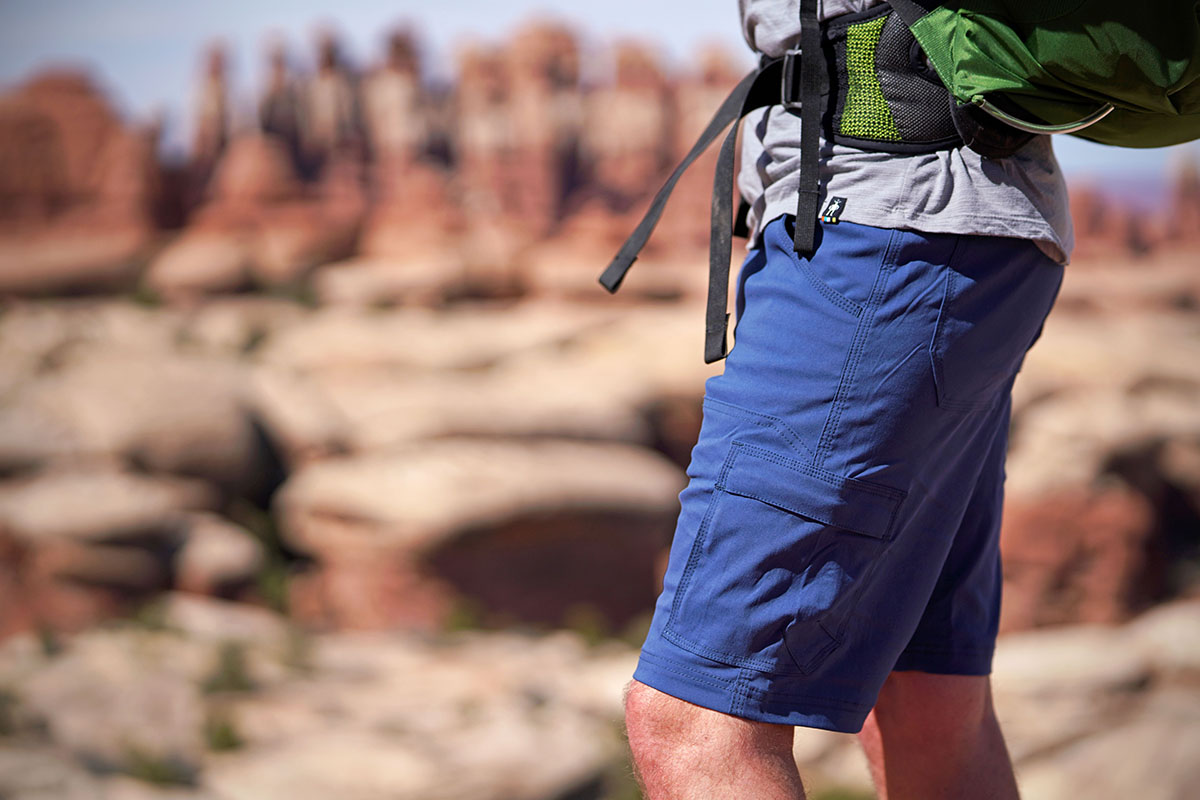
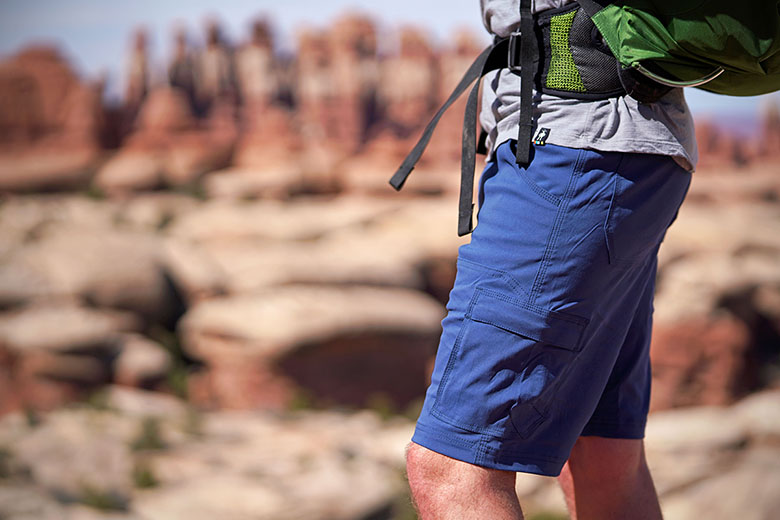
Switchback Travel


Switchback Travel
Most hikers know the value of a quality pair of hiking pants, but for midsummer conditions or particularly active days on the trail, we turn to hiking shorts. In addition to being more breathable and quicker to dry, most of our favorite modern hiking shorts are impressively durable, boast functional storage, and have handy adjustments at the waist for dialing in fit. We tested a range of hiking shorts all over the world—from long trails in Patagonia to the deep woods of the Pacific Northwest—to narrow in on our streamlined list of 10 models below. From technical and performance-ready softshell designs to everyday-friendly options that wear well both around town and outdoors, below are our favorite hiking shorts of 2025. For more information, see our comparison table and buying advice below the picks. Of note: Most of the testing and information below is focused on men’s designs, but we've also written a dedicated round-up on the best women’s hiking shorts.
Editor’s note: We updated our hiking shorts guide on August 11, 2025, to include the prAna Stretch Zion shorts and add photos from recent testing trips. We also combed through the guide to ensure prices, colorways, and products were current at the time of publishing.
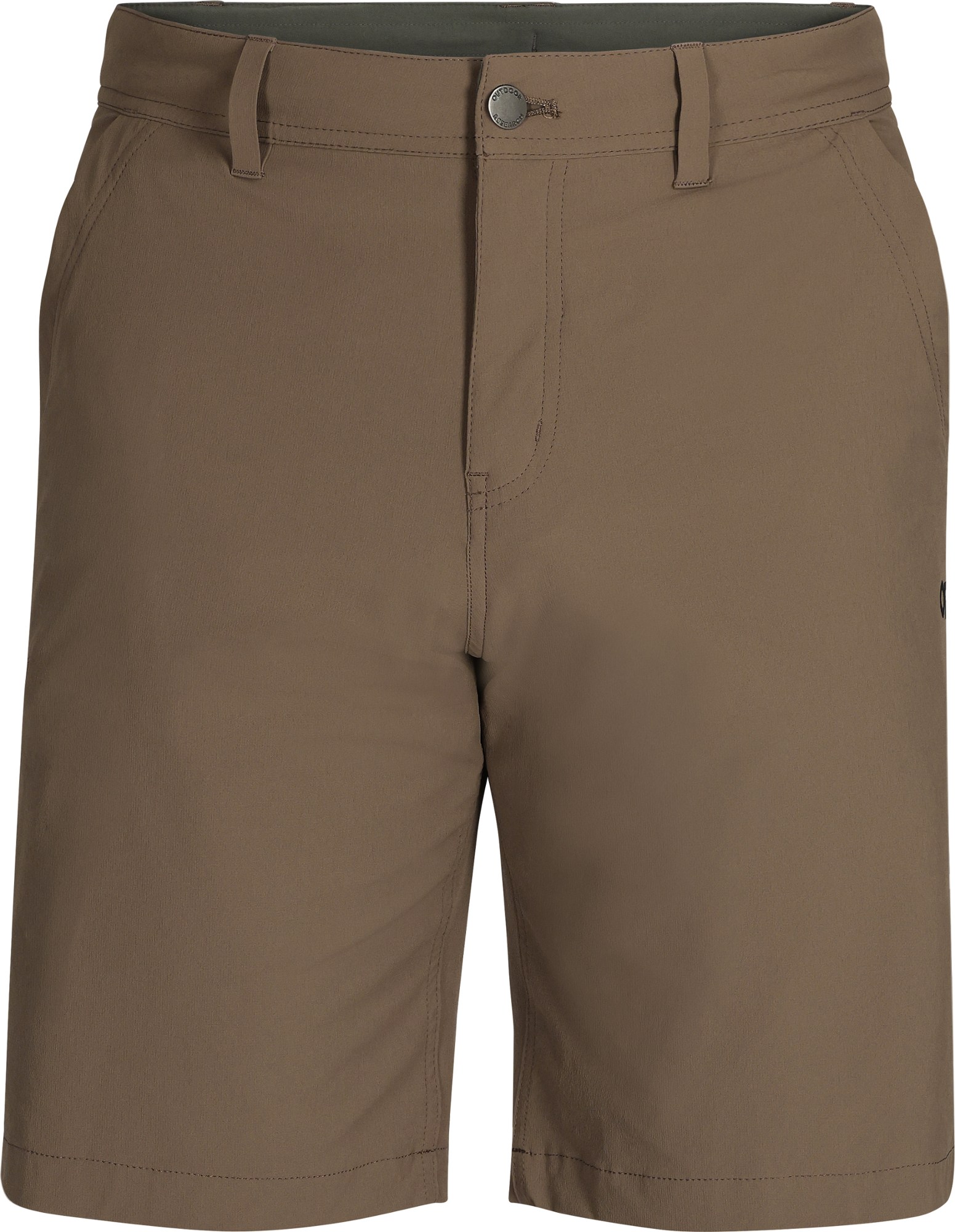 Inseam: 5 and 7 in (women's), 9 in. (women's plus size), 7 and 10 in. (men's)
Inseam: 5 and 7 in (women's), 9 in. (women's plus size), 7 and 10 in. (men's)
Materials: 86% nylon, 14% spandex
Waist: Button, drawcord, & fly (men's), button & fly (women's)
What we like: Light and breathable but impressively tough; functional storage layout.
What we don’t: Internal drawcord is less effective at dialing in fit than a built-in belt.
Outdoor Research can be hit or miss in the performance department, but their Ferrosi collection is a real winner. We have a lot of experience with the namesake fabric—we’ve worn several variations of Ferrosi pants and softshell jackets over the years—and the shorts were similarly quick to impress. In sum, they’re lightweight, breathable, and stand up very well to long-term use. The generous amount of spandex in the design helps with durability (the fabric “gives” rather than tearing under pressure) and adds a nice dose of stretch and mobility for movement-dependent activities like hiking and backpacking. Finally, we love the versatile length and regular cut: The 10-inch shorts fell just above the knees on our 5’9” tester, providing decent coverage without feeling too long or baggy.
What’s not to like about the Ferrosi Shorts? First, the internal drawcord on the 10-inch inseam model isn’t as effective at dialing in fit as a built-in belt like you get with the prAna Stretch Zion below, although the loops make it easy to add one (note: the men's 7-inch variation comes with a belt). Second, some may prefer a little more storage, although we personally love the simple yet practical layout that includes zippered pockets at the right hip and rear, as well as a drop-in left back pocket and hand pockets. Prior versions of the Ferrosi had reports of the waistband loosening over time, but Outdoor Research addressed the issue during a recent update, and we haven’t had any problems with security to date. And importantly, the retooled fabric now uses recycled nylon (46%) without compromising on quality, looks, or overall performance. It’s always a risk updating such a popular line, but we think OR did a great job this time around, making the latest Ferrosi our favorite overall design this season.
See the Men's OR Ferrosi Shorts 10" See the Women's OR Ferrosi Shorts 7"
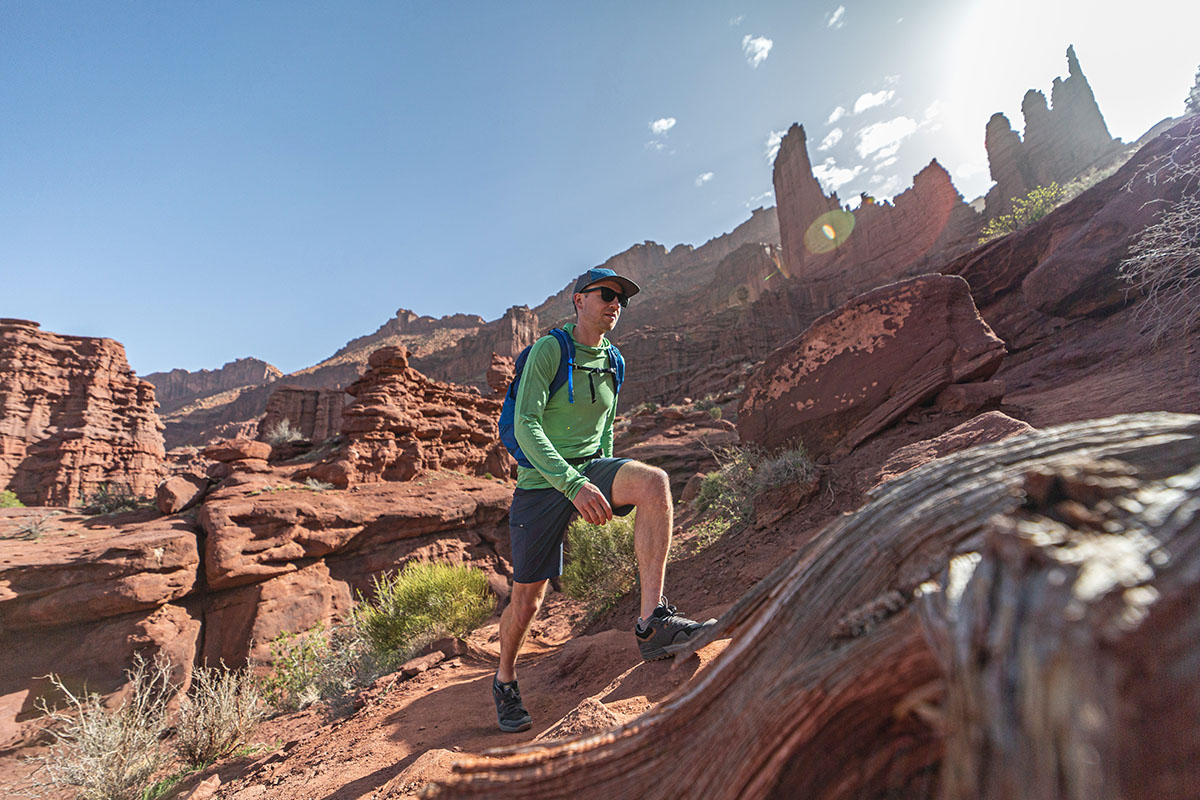
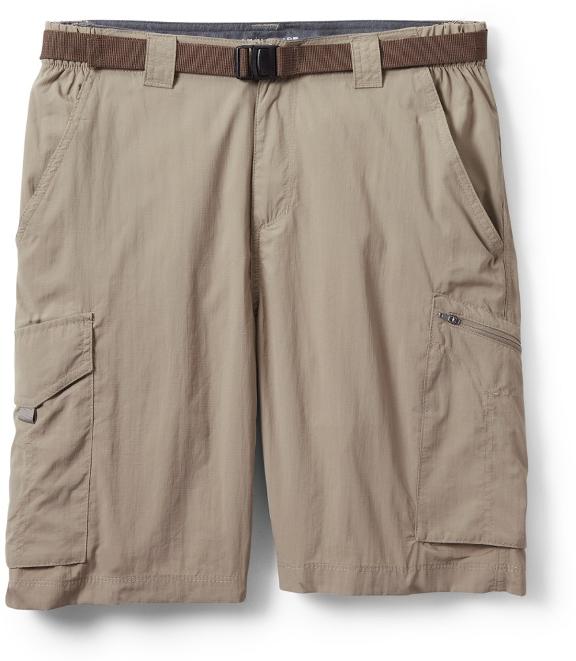 Inseam: 10 and 12 in.
Inseam: 10 and 12 in.
Materials: 100% nylon, polyester mesh panels
Waist: Built-in belt & fly
What we like: Great comfort and performance for the price.
What we don’t: No added stretch, runs small.
The Outdoor Research Ferrosi Shorts above are an undeniably premium and well-built design, but the price tag will likely deter many budget-conscious shoppers. Enter the Columbia Silver Ridge Cargo Shorts, which will save you a considerable chunk of change while still offering good all-around performance. The 100% nylon construction is breathable and dries quickly, making them a great option for hikers and travelers alike. Storage is another highlight, including deep and easily accessible hand pockets, three massive cargo-style pockets (two at the back and one on the right leg), and a zippered security pocket on the left thigh. All told, for casual summer hiking and backpacking, the Silver Ridge is well-appointed and a standout value.
What do you sacrifice by saving with the Silver Ridge Cargo Shorts? The most glaring omission is the lack of built-in stretch, which is a notable downside for mobility. By comparison, the Ferrosi above includes 14% spandex for a sizable boost in freedom of movement, although we appreciate that Columbia included a gusset to help when squatting or bending over. However, the zippers aren’t the smoothest we’ve used, and the cheaper materials won’t hold up as well as the more premium designs here. Finally, some users report issues with the fit, including tightness around the hips and waist that’s particularly noticeable when ascending steep slopes. But you’d be hard-pressed to find better overall performance for less, which is why we’ve included the Silver Ridge here.
See the Silver Ridge Cargo Shorts
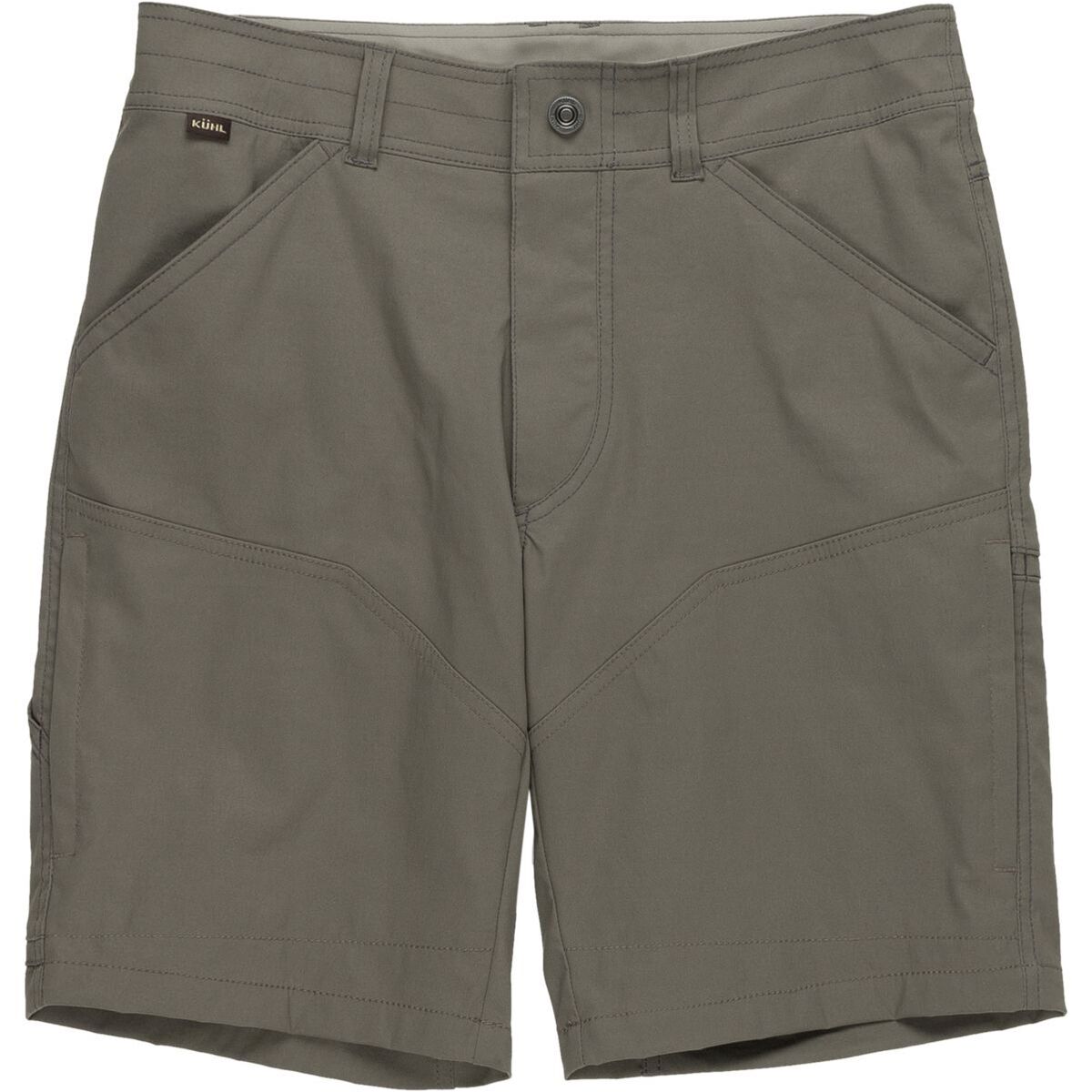
Inseam: 8, 10, and 12 in.
Materials: 95% nylon, 5% spandex
Waist: Snap & fly
What we like: Top-notch build quality and very generous storage.
What we don’t: We prefer simpler and more streamlined designs.
Kühl has made a name for itself in the hiking apparel space with its distinctive utilitarian styling, which isn’t for everyone but does add a nice technical slant. Another Kühl hallmark is their excellent build quality, which is readily apparent in the Renegade Short: The closure system includes a sturdy metal snap and oversized fly zipper, the length is practical with coverage down to the knee, and the fabric is stretchy yet tough with a noticeably high-end feel (it’s reminiscent of Patagonia’s Quandary below but a little thicker and tougher). And those who prioritize generous storage will be very pleased by the eight-pocket layout, including two hand pockets, two rear pockets, and two zippered side pockets that don’t get in the way like traditional cargo designs. Rounding out the build are drop-in-style pockets at the back/side of the leg, which don’t work well for valuables due to the lack of zippers, but are great for items like snacks that you’ll want quick access to.
The Kühl Renegade is decently streamlined considering the number of pockets, but there’s no denying that it’s bulkier and busier than many other options here. Some won’t mind this trade-off for the bump in storage, but we personally like a little more simplicity in our hiking shorts, especially on long day hikes and other mileage-heavy objectives. And at this price point, we prefer the stretchier and softer fabric that you get with OR’s Ferrosi above. But both are well-made and capable hiking designs, and the Renegade’s smart mix of durability and storage makes it very popular year after year. On the flip side, if you think you might want even more storage, the Renegade also comes in a Cargo version.
See the Kühl Renegade Short
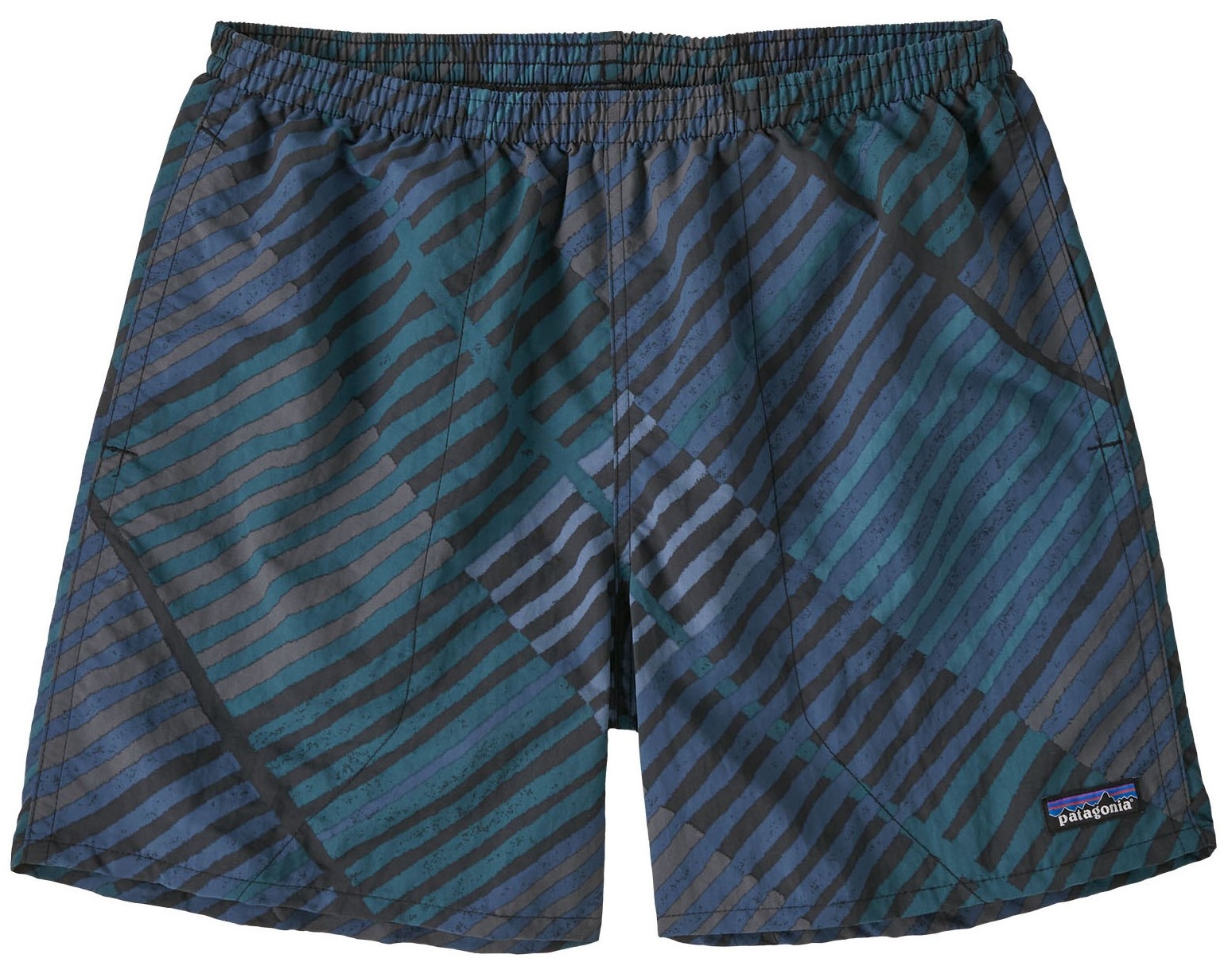 Inseam: 2.5 in. (women's), 5 and 7 in. (men's and women's)
Inseam: 2.5 in. (women's), 5 and 7 in. (men's and women's)
Material: 100% nylon
Waist: Elastic & drawcord
What we like: A capable and good-looking multi-sport short with a nice sustainability slant.
What we don’t: Vibrant styling, short inseam, and looser cut won’t work for everyone.
Patagonia’s Baggies may look relatively unassuming at first glance, but there’s much more to these shorts than meets the eye. First is versatility: The Baggies fit the part for everything from hiking and water sports to everyday use, with specialized features for swimming, like a hanging mesh liner and vertical pockets to limit drag. The all-nylon construction is also fast to dry yet surprisingly tough—great for quick dips along the trail during hot summer hikes. The elastic waistband is simple but decently comfortable with an interior drawcord for snugging things down, and we love the remarkable range of vibrant colorways and designs (18 between the two inseams at the time of publishing), including a couple retro-looking multi-tone options. All told, the Baggies hit a nice balance between style and performance, making them a classic choice for both in and out of the water.
What are the downsides? While we personally like the Baggies’ relaxed fit, some won’t love the looser cut for hiking. To be sure, the 5” inseam version we tested will be less prone to swishing than the 7” Baggies Longs, but the shorter length won’t work for everyone (for women, there is the Baggies Longs as well as the 2.5-in. Barely Baggies). The bright and board-short-like styling may also seem a little flashy, especially if you’re used to more traditional designs like the Kühl Renegade above. Finally, the Baggies are a little stiff and lack the soft feel of designs like the Ferrosi above, but the laid-back fit and timeless styling have made them a summertime classic. Bonus: With a recent update, the Baggies are now built with Patagonia’s NetPlus fabric that’s made with nylon from recycled fishing nets. Another quick-drying and water-ready option to consider is the REI Trailmade Amphib.
See the Men's Patagonia Baggies 5" See the Women's Patagonia Baggies 5"
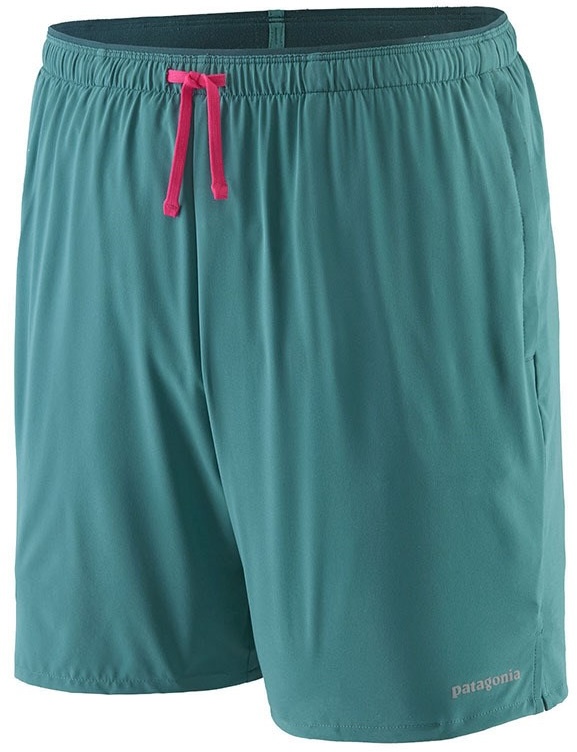 Inseam: 5.5 in. (women's), 8 in. (men's)
Inseam: 5.5 in. (women's), 8 in. (men's)
Materials: 90% polyester, 10% spandex
Waist: Elastic & drawcord
What we like: Super light and airy feeling with zippered front pockets.
What we don’t: Can’t match the durability of a standard hiking design.
Running shorts are commonplace for hikers and thru-hikers thanks to their light and airy feel, but most designs fall short in features and durability, which makes Patagonia’s Multi Trails an intriguing option. Building off a standard trail running short—complete with a built-in boxer-brief liner—Patagonia incorporated some thoughtful hiking-focused features, including a fairly generous 8-inch length (many running shorts are much shorter) and beefed-up polyester shell fabric. Additionally, while many running shorts are lacking in storage, the Multi Trails sports two zippered pockets at the front and a snap pocket at the back (and the back pocket doubles as a stuff sack for the shorts). In practice, the zippered storage has proven invaluable on the trail and eliminated any concerns about securely stashing valuables and essentials.
Though it's not a master of any single discipline, the Multi Trails' versatility is what earns it a high spot on our list. Runners may prefer a little more stretch in the fabric—the shorts don't restrict movement but are certainly stiffer than your average running design—and a tougher nylon build would make the Multi Trails a bit more off-trail-ready. But sometimes, the sweet spot is finding an option that can do it all—even if you have to make some small sacrifices in the name of all-around performance. It’s here, as a jack of all trades, that the Multi Trails excels.
See the Men's Patagonia Multi Trails See the Women's Patagonia Multi Trails
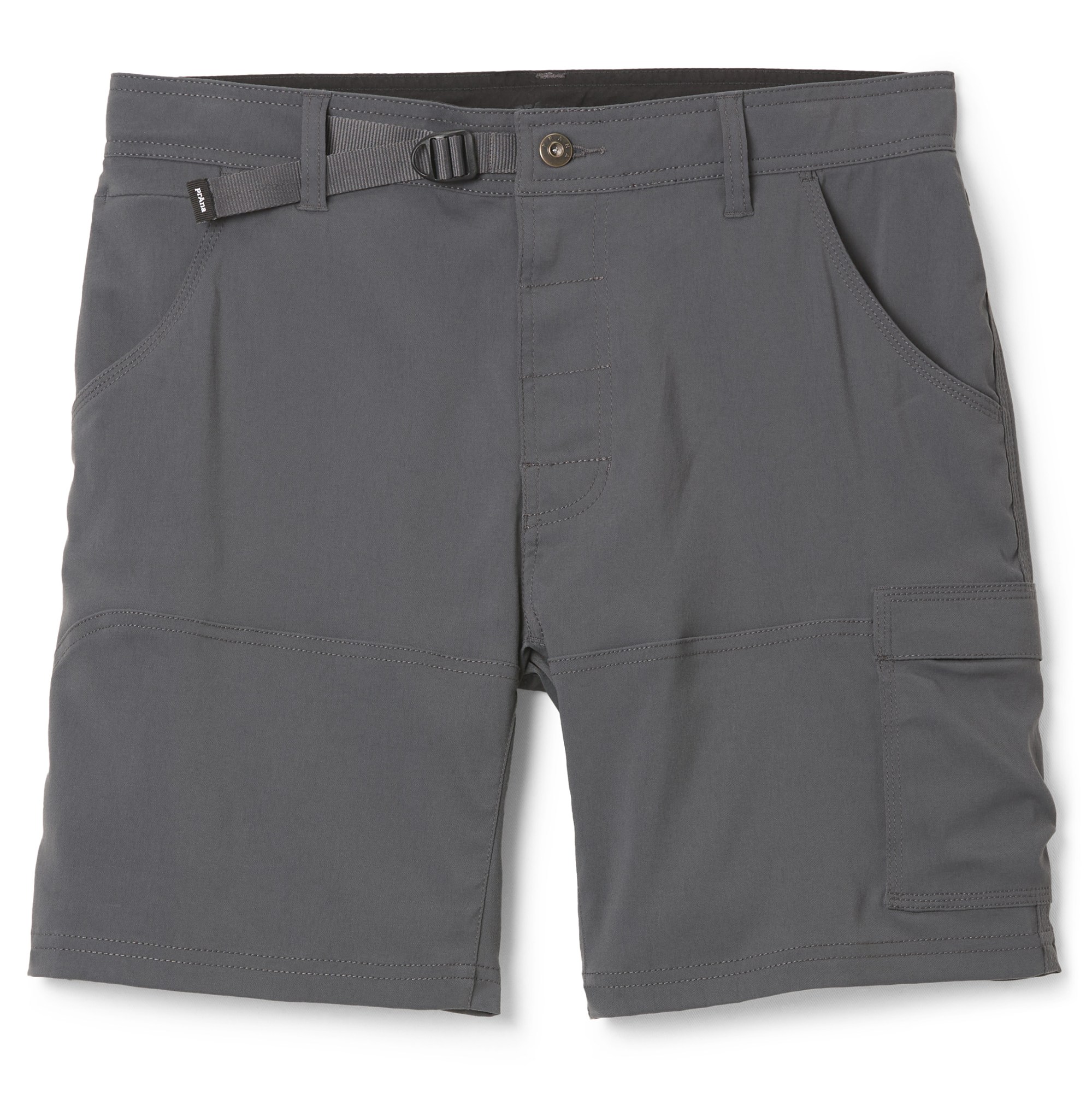 Inseam: 3 and 5 in (women's), 8 and 10 in (men's)
Inseam: 3 and 5 in (women's), 8 and 10 in (men's)
Materials: 95% nylon, 5% elastane
Waist: Built-in belt, button, & fly (men's), button & fly (women's)
What we like: Thicker and more protective than the Ferrosi above, and comes with a built-in belt.
What we don’t: Durability adds weight and bulk; women's version doesn't have as many pockets or a belt.
The Stretch Zion Pant is back—and so are the shorts. After much demand, Prana has revived their beloved original Zion line, including this classic short version built from their proven nylon/elastane blend. True to form, the Stretch Zion Shorts strike an excellent balance of mobility, comfort, and durability, making them a favorite for everything from long hikes and summer crag sessions to international travel. Available in 8- and 10-inch inseams for men (and 3- or 5-inch for the women's Halle), the shorts offer a functional and flattering fit that doesn’t restrict movement or look out of place around town.
As expected, the feature set is well thought out for active use. You get UPF 50+ sun protection, a mesh-lined cargo pocket with double entry (perfect for securing a phone or map), ventilated gusset for added mobility and ventilation, and a concealed coin pocket with an internal key loop (the women's Halle only has two back patch pockets and two front hand pockets). We also like the sturdy metal shank closure, which provides a more durable feel than the plastic alternatives on some competitors. That said, the latest version isn’t identical to the original—Prana has made subtle changes to the fit and finish over the years, and the newer fabric feels slightly less robust than the OG build. The durable nature of the fabric also makes these a bit more bulky than others in our wardrobe. Still, the Stretch Zion Shorts remain a solid pick for those wanting one pair of shorts that can handle just about everything, from trail to tarmac.
See the Men's prAna Stretch Zion See the Women's prAna Halle
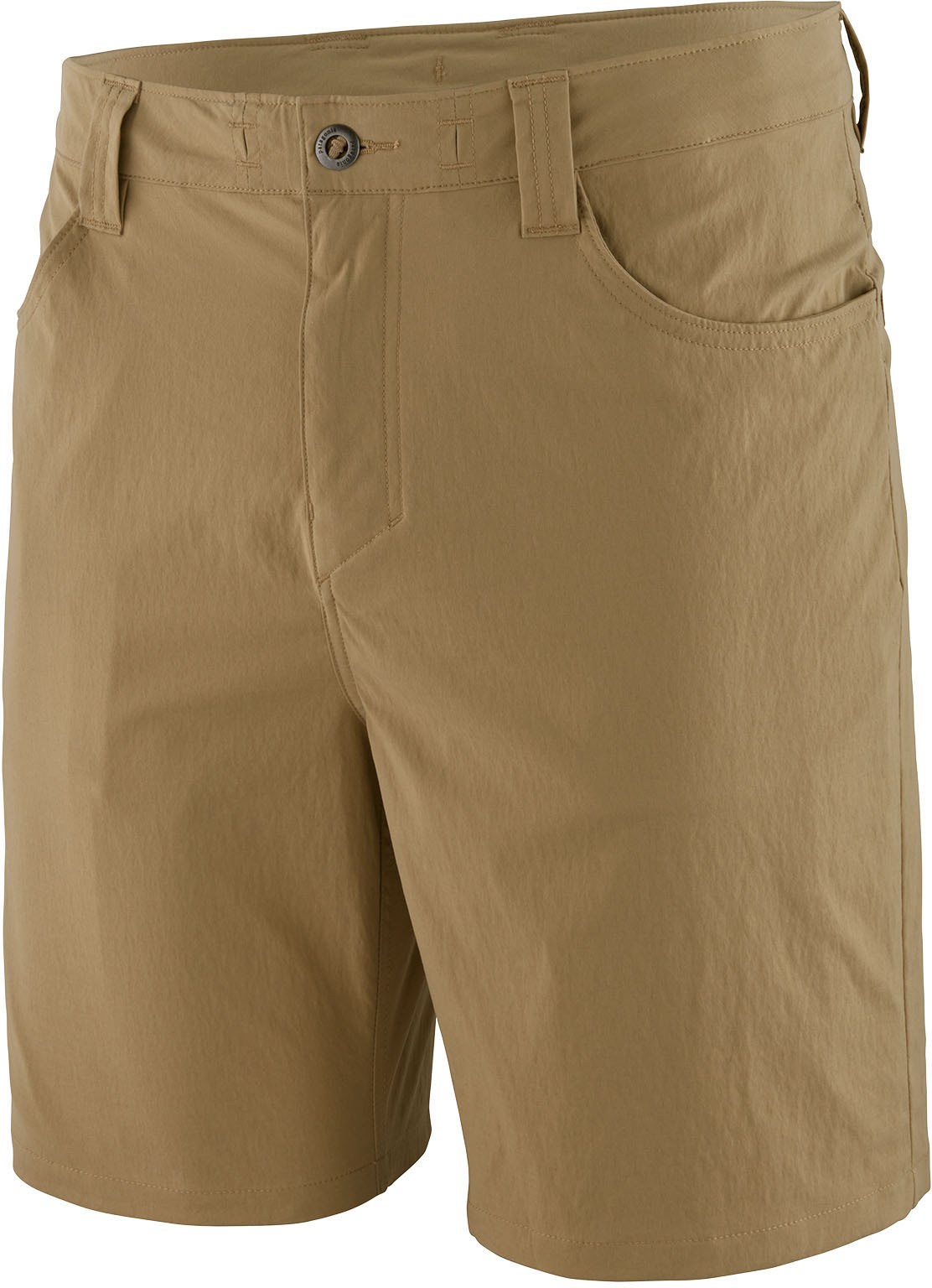 Inseam: 5 and 7 in. (women's), 8 and 10 in. (men's)
Inseam: 5 and 7 in. (women's), 8 and 10 in. (men's)
Materials: 96% nylon, 4% spandex
Waist: Button, drawcord, & fly
What we like: Most recent update improved comfort and boosted the shorts' sustainability focus.
What we don’t: Not as soft or stretchy as the OR Ferrosi above; a couple fit and finish issues.
Next up are the Patagonia Quandary Shorts, which go head-to-head with the Outdoor Research Ferrosi above as a lightweight and simple design with widespread appeal. Like the Ferrosi, the Quandary has a fairly streamlined but functional storage layout that comprises two drop-in-style hand pockets, two rear pockets (the left one has a zipper), and an additional zippered pocket at the right thigh. The fit adjustment system is similar, too, including an internal drawcord at the front to dial in tautness at the waist and loops for adding a belt if needed. The Ferrosi wins out for stretch and has a more softshell-like feel, but the latest Quandary is more supple than ever (the past version felt notably cheaper). And we appreciate that Patagonia upped the sustainability focus with the new model—the shorts are now made from recycled fishing nets—along with adding a new inseam length (8 in.).
That said, we do have some nitpicks with the design. First is the internal drawcord, which doesn't hold nearly as well as a built-in belt and requires retying throughout the day. Next are the Quandary's zippers, which don’t operate as smoothly as some of the competition, including the Ferrosi and Stretch Zion above. It’s not a major difference, but they do have a slightly cheaper and flimsier feel. As we touched on above, the OR also wins out in comfort with its softer materials, although the Quandary’s nylon-heavy build has a cleaner look that some will prefer for travel and everyday wear (plus, it's highly durable). While we think the Ferrosi wins out over the Quandary, we still think these shorts are stellar additions to any hiker's loadout.
See the Men's Patagonia Quandary Shorts See the Women's Quandary Shorts 7"
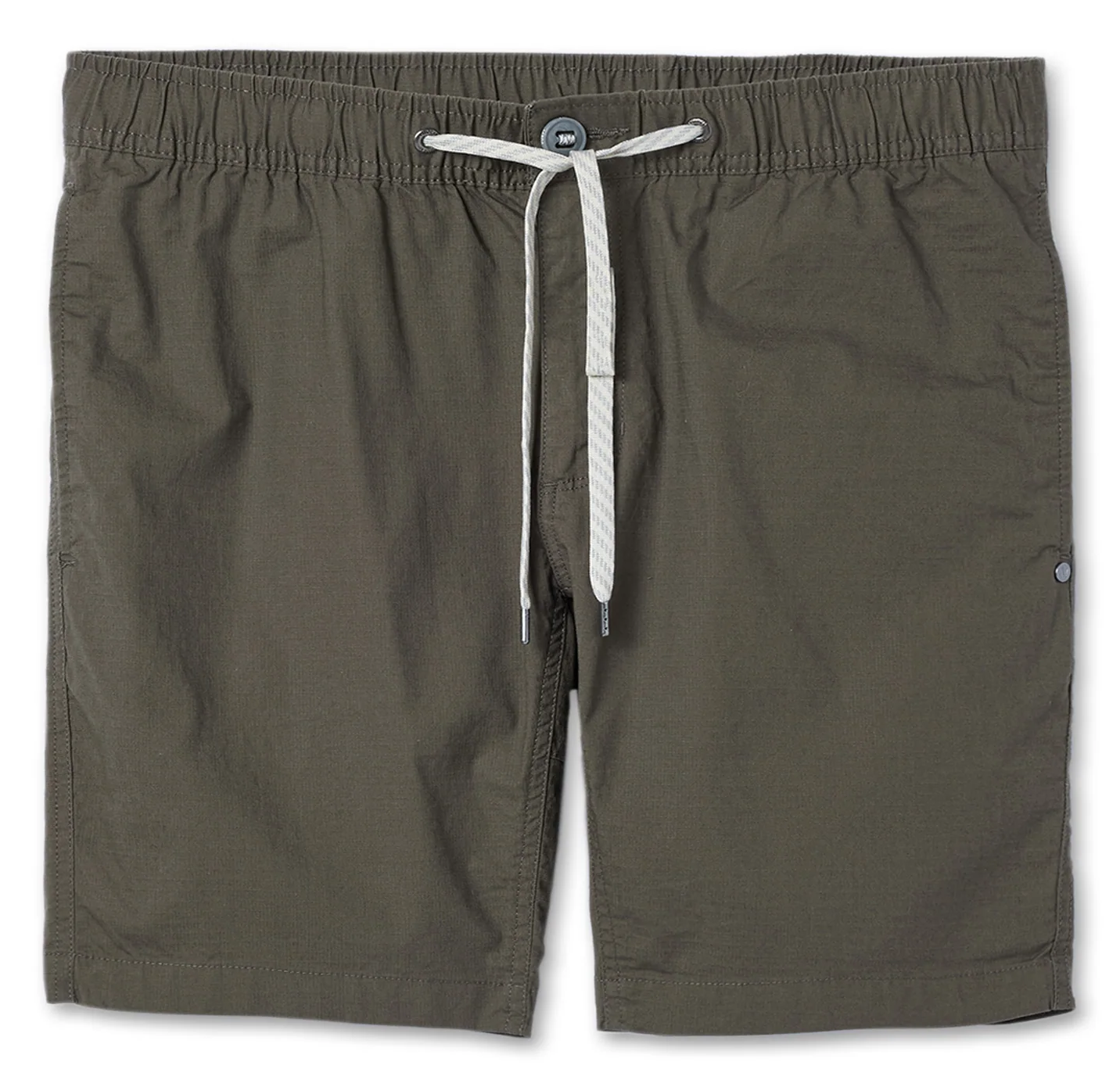 Inseam: 8 in.
Inseam: 8 in.
Materials: 98% cotton, 2% elastane
Waist: Elastic w/ button, drawcord, & fly
What we like: Tough, comfortable, and one of the most stylish options here.
What we don’t: Cotton-heavy build limits the shorts’ backcountry appeal.
Athleisure brand Vuori is a relative newcomer to the outdoor scene, but many folks (ourselves included) love the balance of fashion and function. True to form, their Ripstop Short here is easily one of the most stylish options on the market, combining super durable materials and practical storage (two zippered pockets) in a modern and good-looking package. In a departure from standard nylon and polyester constructions, the Ripstop’s cotton-heavy build does limit its backcountry appeal—we don’t advise bringing these shorts along on multi-day outings into the wilderness or into unpredictable weather (Colorado’s notorious mid-day thunderstorms, for instance). But the Ripstop Short excels as a summer day hiker and easily pulls double duty for everyday wear (the shorter 8-in. inseam helps), which is a winning combination for many.
Comfort is another highlight of the Vuori Ripstop Short’s design (and many cotton pants in general). It can’t match the mobility of performance options like the Patagonia Quandary, prAna Stretch Zion, or Outdoor Research Ferrosi above, but the touch of elastane (2%) and gusseted crotch offer enough give for most activities. We also found the unique waistband design—including a button, zippered fly, exterior drawstring, and elastic along the perimeter— to be very functional for dialing in fit. The biggest deterrent for many will be the lack of performance chops: Cotton doesn’t breathe all that well and holds onto moisture when wet, which is a bad combination for high exertion and warmer temperatures. But the Ripstop Short has its place as a casual option that can hold its own on easy to moderate day hikes, and we certainly appreciate the toughness and confidence-inspiring build quality.
See the Vuori Ripstop Short
 Inseam: 11 in.
Inseam: 11 in.
Materials: 65% polyester, 35% cotton
Waist: Button & fly
What we like: Top-notch build quality and attention to detail for serious outdoor use.
What we don’t: Pricey and overkill for more casual adventures.
We fell in love with the women's Fjallraven Abisko Trekking Tights a few summers back and have used them extensively for everything from hiking and backpacking to multi-pitch rock climbing. While decidedly less technical, their Abisko Shorts are equally well executed with the premium workmanship we’ve come to expect from the Scandinavian brand. The headliner here is Fjallraven’s legendary G-1000 fabric, which uses a mix of polyester and cotton to effectively balance durability, moisture-wicking, and comfort. Another unique feature is the waist design, which is slightly lower at the front and higher in the back to maximize comfort when carrying a pack. Added up, the Abisko Shorts are one of the most purpose-built options here and highly capable for hiking, backpacking, and even climbing.
As with most Fjallraven products we’ve tested, all of the Abisko’s details are well sorted, too: You get extra fabric at the crotch to minimize rubbing, sturdy metal hardware, and functional storage, including flap-protected cargo pockets at each side and hipbelt-friendly hand pockets with zippers, the latter of which is a rarity in the hiking short market. Fjallraven products don’t come cheap—the Abisko Shorts are the priciest option on our list—but that’s certainly not a knock on quality or overall craftsmanship. And we also want to touch on the Abisko Hike Shorts (which is available for women), which are similarly technical but thinner and more ventilated for true hot-weather use.
See the Men's Fjallraven Abisko Shorts
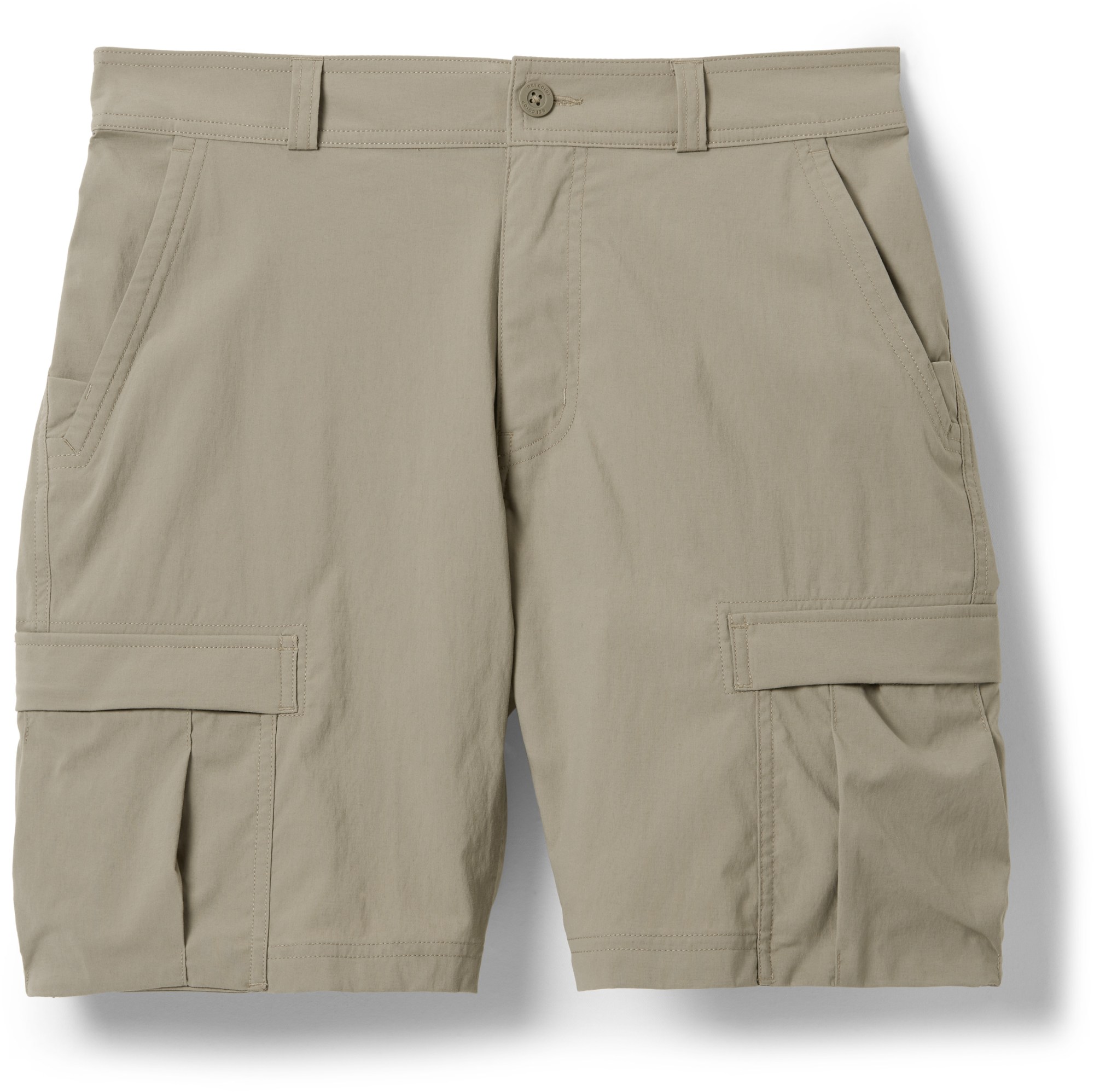 Inseam: 9 in.
Inseam: 9 in.
Materials: 96% nylon, 4% spandex
Waist: Elastic w/ button & fly
What we like: Better build and material quality than the Columbia Silver Ridge Cargo above.
What we don’t: The details aren’t as well-sorted.
REI’s Sahara collection is their flagship hiking bottoms line, and the Cargo Shorts here are a nice reflection of the brand’s focus on value. For a bit more than the Columbia Silver Ridge Cargo Shorts above, the Sahara uses noticeably higher-quality materials, including a small dose of spandex (4%) for improved mobility (the Columbia is 100% nylon). The fabric itself is soft and supple—on par with pricier alternatives like the Patagonia Quandary above—and the shorts have the light, airy, and breathable feel that we love for hot-weather hikes. Storage isn’t bad either, including dual cargo pockets (one with a flap and one with a zipper) as well as standard hand and rear pockets. Taken together, the Sahara Cargo Shorts are another well-rounded REI design at a good price.
In this case, however, the devil is in the details. Specifically, the Sahara Shorts have a loose fit in the legs that’s comfortable but does give them a slightly less modern look than much of the competition (of course, this part is subjective). Additionally, while we appreciate that the hand pockets are deep, they extend all the way into the cargo pocket space and can create some awkward overlap when both pockets are in use. The belt loops are also noticeably tiny and couldn’t accommodate our Arcade belt (a pretty classic hiking choice), and the plastic button closure isn’t very confidence-inspiring with thin thread holding it in place. Again, the Sahara Cargo Shorts do feel more premium and durable than the Columbia Silver Ridge above, but we were admittedly disappointed by the finer details.
See the Men's REI Sahara Cargo Shorts See the Women's Sahara Bermuda Shorts
| Hiking Short | Price | Inseam | Materials | Waist | Pockets |
|---|---|---|---|---|---|
| OR Ferrosi Shorts | $85 | 7, 10 in. | 86% nylon, 14% spandex | Button, drawcord, fly | 5 |
| Columbia Silver Ridge | $50 | 10, 12 in. | 100% nylon, mesh panels | Built-in belt & fly | 6 |
| Kühl Renegade Short | $79 | 8, 10, 12 in. | 95% nylon, 5% spandex | Snap, fly | 8 |
| Patagonia Baggies 5” | $69 | 5, 7 in. | 100% nylon | Elastic, drawcord | 3 |
| Patagonia Multi Trails | $79 | 8 in. | 90% polyester, 10% spandex | Elastic, drawcord | 3 |
| prAna Stretch Zion Short | $75 | 8, 10 in. | 95% nylon, 5% elastane | Built-in belt, button, fly | 5 |
| Patagonia Quandary Shorts | $85 | 8, 10 in. | 96% nylon, 4% spandex | Button, drawcord, fly | 5 |
| Vuori Ripstop Short | $74 | 8 in. | 98% cotton, 2% elastane | Elastic, button, cord, fly | 5 |
| Fjallraven Abisko Shorts | $110 | 11 in. | 65% polyester, 35% cotton | Button, fly | 5 |
| REI Sahara Cargo Shorts | $60 | 9 in. | 96% nylon, 4% spandex | Elastic, button, fly | 6 |
The Switchback Travel team has tested dozens of hiking shorts over the years, from technical designs with tough fabrics and ample storage to quick-drying options for water sports like paddle boarding and kayaking. Former editor-in-chief John Ellings compiled our initial list of 13 picks in 2022 after extensive testing from the Utah desert to his home in the wet and rugged Pacific Northwest. Managing editor Sarah Nelson has also provided input on many women’s designs (for a full list, we’ve put together a separate women’s hiking shorts round-up). Senior editor Chris Carter took over the guide in early 2025. A seasoned thru-hiker, Chris has completed the Triple Crown of long trails in the U.S. (AT, PCT, and CDT) and continues to backpack around the world. He won't be caught in just any ol' slouchy pair of shorts on the open trail.
In putting together our current list of 10 hiking shorts, we drew from our own on-trail experiences, reached out to testers for additional info, and scoured online hiking forums for feedback from the wider hiking community. When we test hiking shorts, we take them into the field and evaluate how the fabrics hold up, how quickly they are to dry after getting wet, and how they fit and feel on different body types (we often have both male and female testers). We also pay close attention to the waistband style and number of pockets, as comfort and convenience are top priorities for many hikers (ourselves included). Our list changes over time, and we’ll be sure to include any noteworthy additions as they become available.
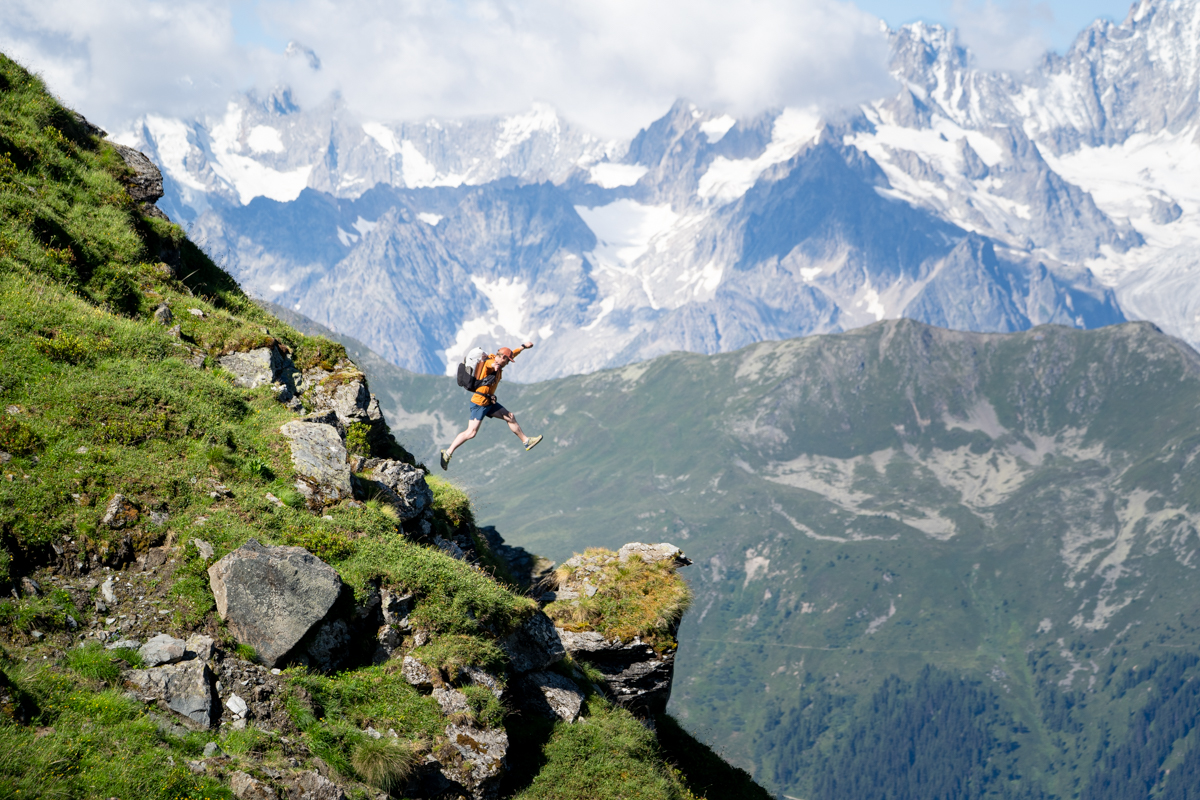
There’s certainly no rulebook on hiking attire—people hit the trail in everything from running shorts to quick-drying, water-ready designs. Depending on the conditions and day’s objective, one of those might even be your best option. That said, there's also a cadre of shorts purpose-built for hiking, which tout features like durable and breathable fabrics, functional storage, extended coverage, waistbelts that fit securely and ride comfortably underneath a backpack hipbelt, and more. If you're looking for the best-performing and longest-lasting tool for the job, hiking shorts are a great place to start. And the good news is that the market is extremely varied, from technical, performance-ready offerings to more casual designs that look just as good in town as they do on the trail. If you're just getting into specialized hiking gear and looking to further build out your wardrobe, be sure to check out our exhaustive guides on the best hiking pants, hiking shirts, and hiking shoes to make sure your fully kitted for the trail.
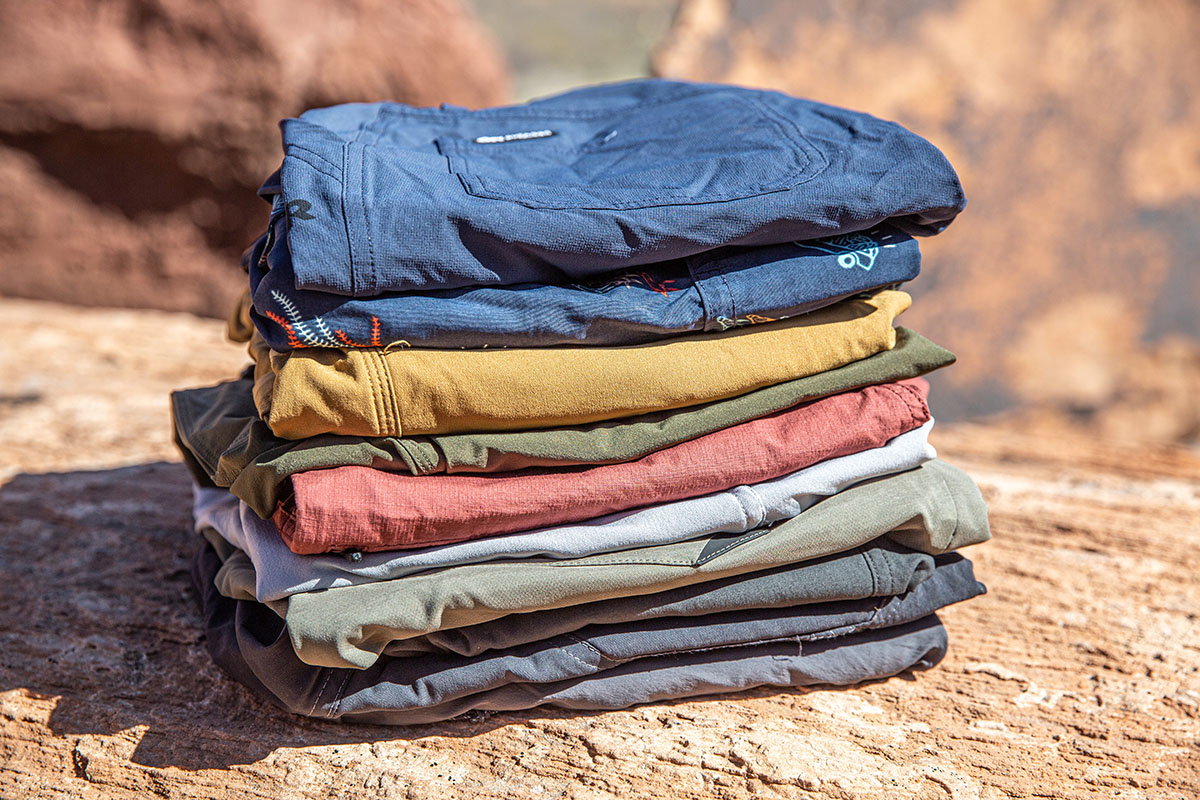
We’ll be honest: We often wear running shorts while hiking. In terms of benefits, they’re lightweight, offer great comfort and freedom of movement, and dry quickly—they're especially great for unseasonably hot days or when mixing some running in on your hike. However, there are several clear downsides. For one, storage is lacking: Some running shorts have no pockets, while others have just one or two small pouches for a set of keys or pair of earbuds. Due to their thinner constructions, running shorts also won't hold up well to trail abuse, and dollar for dollar, hiking shorts will certainly provide a lot more value over time. Finally, with short inseams and minimal fabric, running shorts offer very limited protection from the sun, wind, cold, pesky bugs, and sharp branches. But we do love the comfort they provide and think that hiking shorts could take some cues from running shorts when it comes to simple yet comfortable waistbands and free-flowing designs.
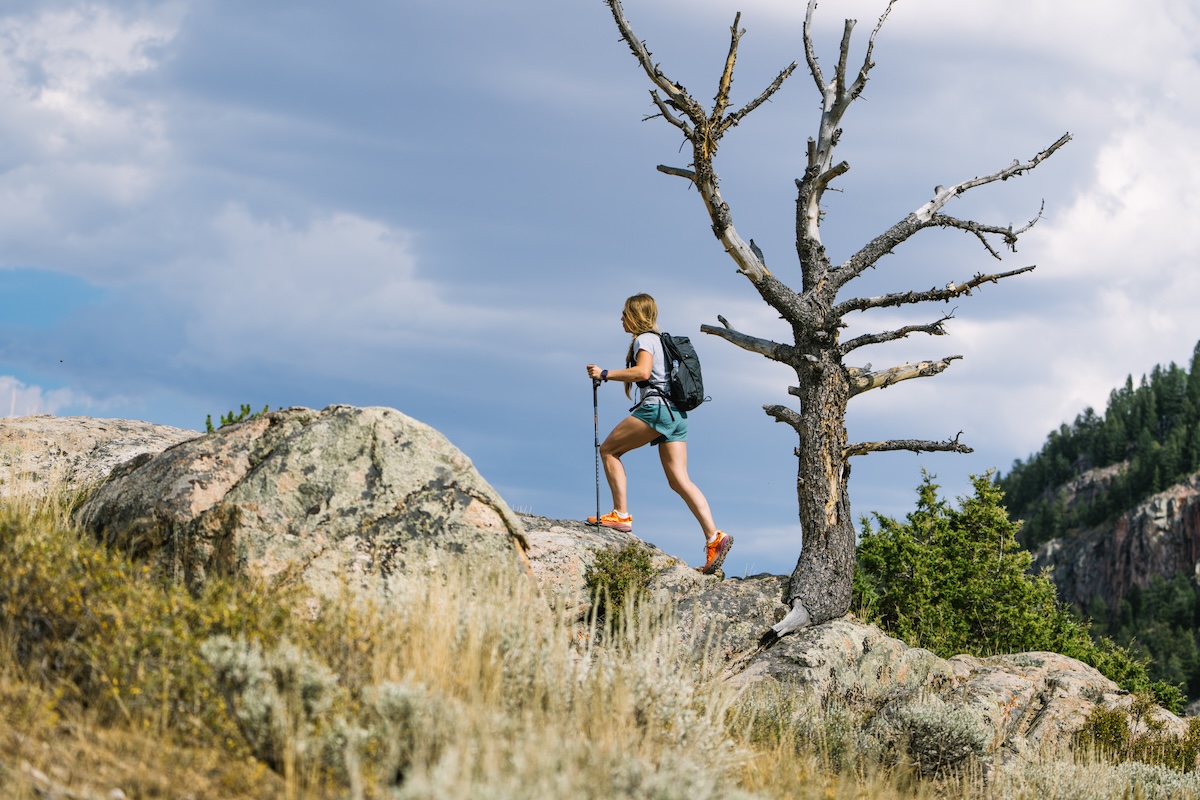
For those who like the idea of hiking in a running short, there are a few designs that stand out to us as more capable than others. A couple of our favorites for both hiking and backpacking are BOA's 1" Elite Split Shorts (for its ultralight weight and breathability) and Patagonia's 5" Strider Pro Shorts (for its comfort and thoughtful pocket layout). One of our authors has thru-hiked multiple long trails in the BOA shorts alone and lauds their surprising durability and long-term comfort at such a lightweight (and affordable price). We also like Patagonia’s Multi Trails collection, which combines features from both trail running and hiking designs. From the former, you get light and airy fabrics along with a built-in boxer-brief liner, but like the latter, you get the longer inseam, multiple zippered pockets, and beefed-up polyester shell fabric.
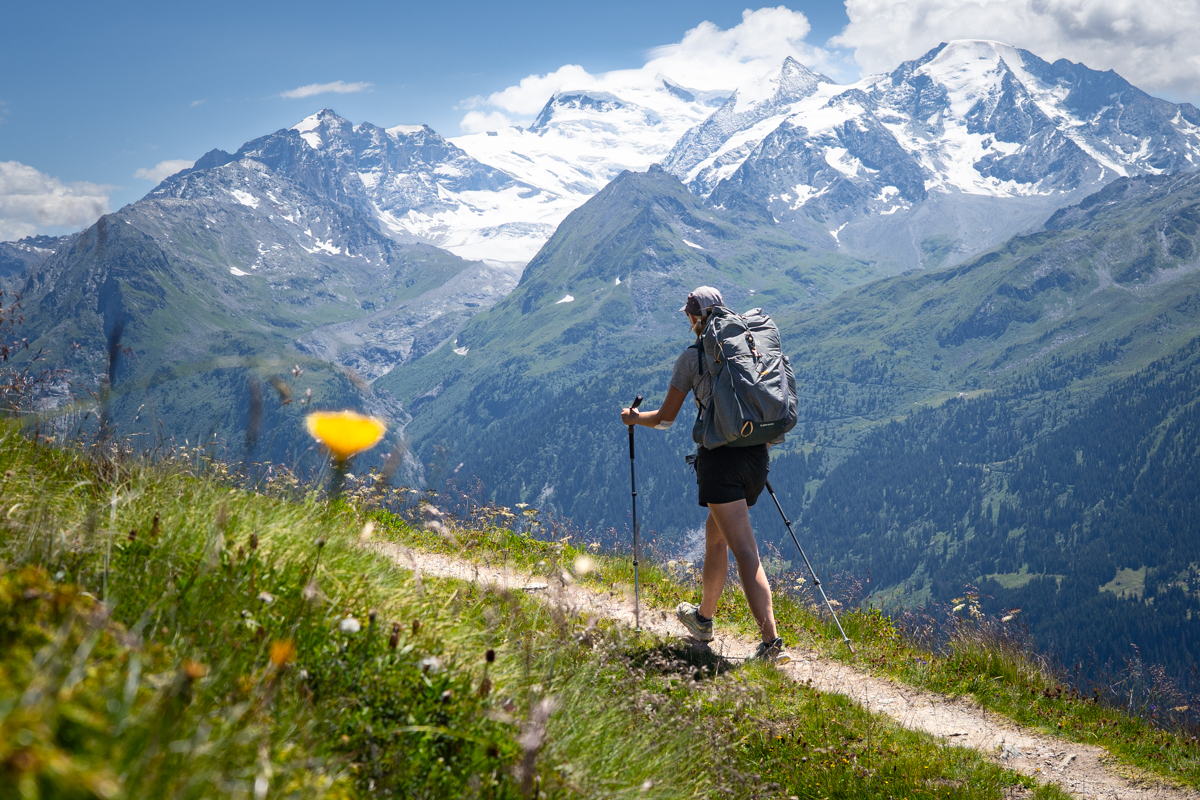
It’s certainly not the most versatile option—we prefer a little more stretch for running, and standard nylon hiking shorts offer better toughness and weather resistance. That said, some may find those trade-offs worth it for the added mobility, ventilation, and comfort of the Multi Trails and other running-focused designs. In the end, it boils down to personal preference and what you value most in your hiking apparel. For those preferring durability and functionality, we'd recommend a solid pair of hiking shorts. For the ultralighter pushing the pace on quick thru-hikes or fast-packing missions, running shorts may be the move.
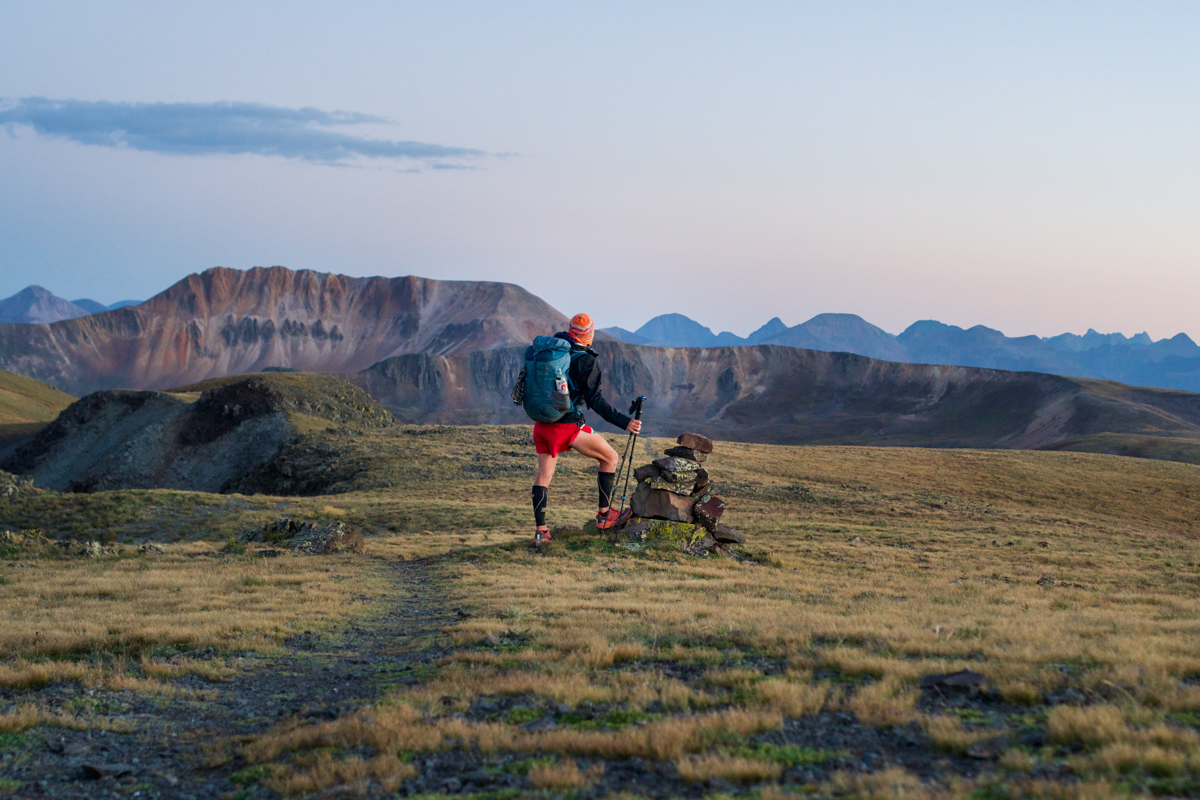
Like hiking pants, most hiking shorts are made of nylon or polyester. These materials are reasonably durable, breathable, good at wicking moisture, and offer great freedom of movement due to their lightweight makeup. Many designs—like our top-ranked Outdoor Research Ferrosi Shorts and prAna Stretch Zion—also incorporate some elastane or spandex for added stretch, which is a real boon for everything from high-stepping over logs to setting up camp. The added give and thickness also make these shorts among the most durable here, great for brushing up against rock and branches, sitting on rough surfaces, and withstanding the wear and tear of a heavy backpack.
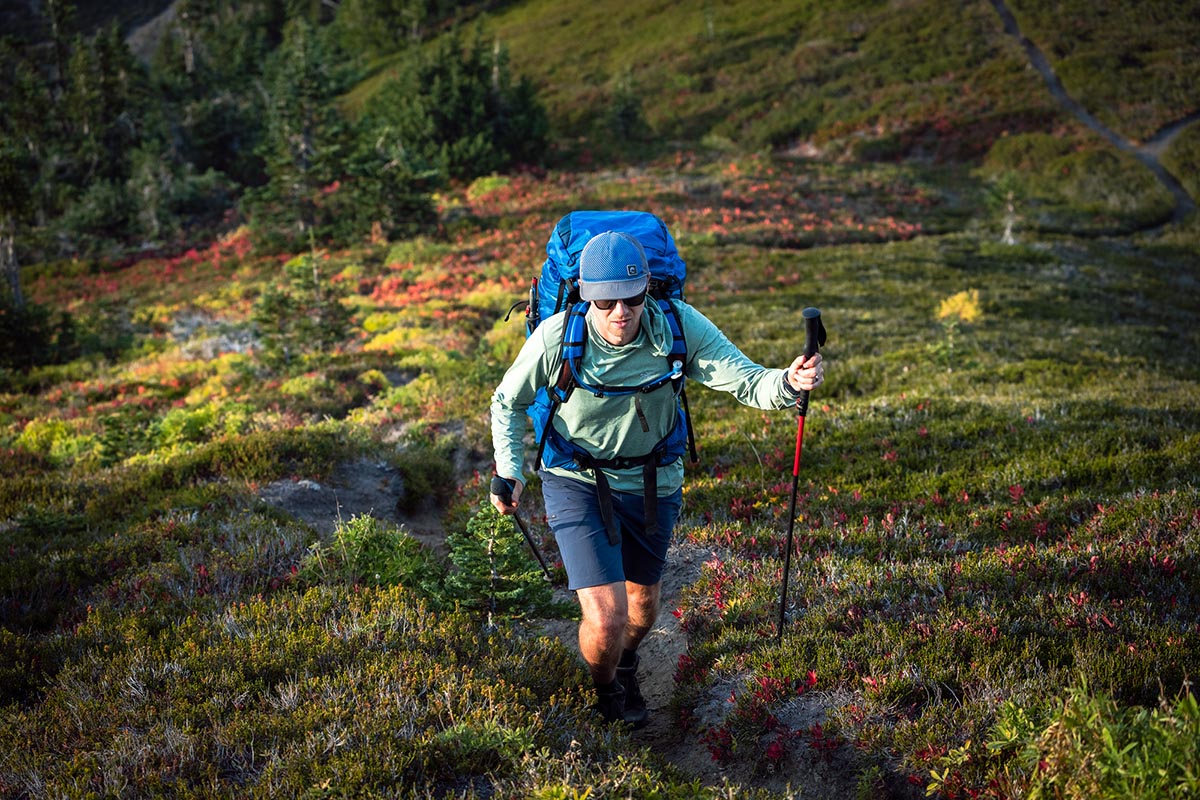
We’ve also included a handful of outliers on this list. The Vuori Ripstop Short, for example, is made with 98% cotton, a rarity these days in outdoor clothing. In general, cotton lacks the durability and mobility of nylon or polyester, and unlike synthetic blends, it absorbs water, meaning it’s not as quick-drying and can get heavy when wet. The upside is that the Ripstop Short is impressively comfortable and stylish, which is all some hikers need for casual days on the trail. In the end, it’s a good idea to tailor your hiking short choice to your objective: We prefer stretch-nylon blends for serious hiking, 100% nylon shorts for water sports, and cotton or fitted designs for more casual days out.
One of the headlining features of a hiking short is durability, especially when compared to casual or running-specific designs. Hiking shorts are meant to take a beating on the trail and around camp and, ideally, should last you multiple seasons of use. However, we still see a lot of variation within the category. As mentioned above, nylon and polyester shorts are generally more robust than cotton styles, and (in most cases) thicker designs are more resistant to abrasion. We've also found that some—but not too much—added stretch can increase durability, allowing a fabric to give rather than tear when stressed. Outdoor Research's Ferrosi Shorts are standouts in this department.
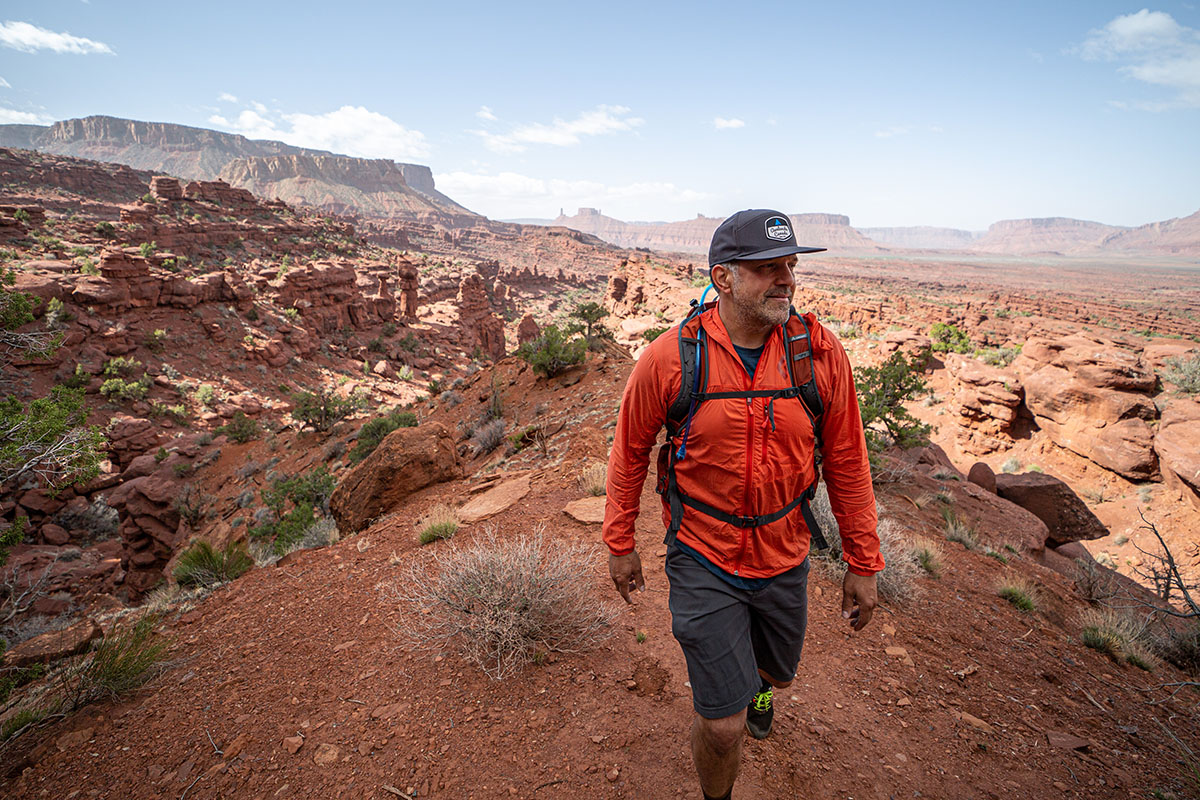
Considering the factors above, one of the most durable shorts here is the Kühl Renegade, which uses a mix of 95% nylon and 5% spandex that provides a nice balance of stretch and toughness. And it's also worth noting that there are some exceptions to these rules: The Vuori Ripstop Shorts (98% cotton), for example, feature a strong Teflon coating for tear and stain resistance that far exceeds most cotton designs. On a similar note, one of our testers wore a pair of Patagonia Baggies (relatively thin nylon with no stretch) for over five seasons of mountain guiding without sustaining a single hole or tear.
When you're hiking in the heat of summer, nothing beats a refreshing dip in a trail-side lake or stream. Most of the hiking shorts above will dry out fairly quickly in warm and sunny conditions, but thin, nylon designs like the Patagonia Baggies are the best tool for the job. On the other hand, thicker synthetic options like the Fjallraven Abisko Shorts and those with more added stretch tend to absorb more water, and cotton is the worst culprit of all. Many shorts will also add a durable water-repellent finish to keep water from penetrating the fabric, but keep in mind that this can degrade over time (you can always revive it by applying a new treatment like Nikwax’s TX.Direct Spray-On).
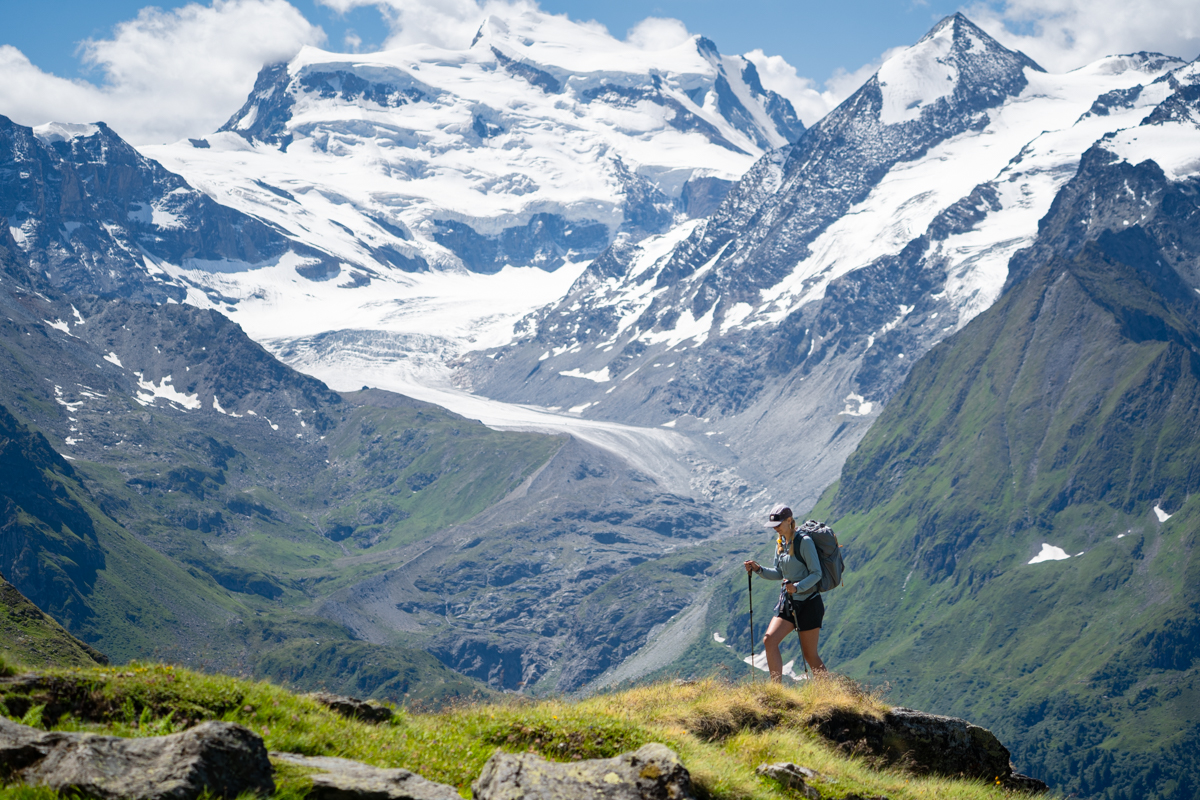
In the end, if you're looking for a quick-drying short for trail-side swimming and other water-based activities, your best bet is a thin, nylon design with relatively short inseam, mesh pockets, and not too much added bulk at the waist. This is another area where running shorts prevail over standard hiking shorts, as they will generally dry out much faster than standard hiking shorts—at the cost of some rugged durability.
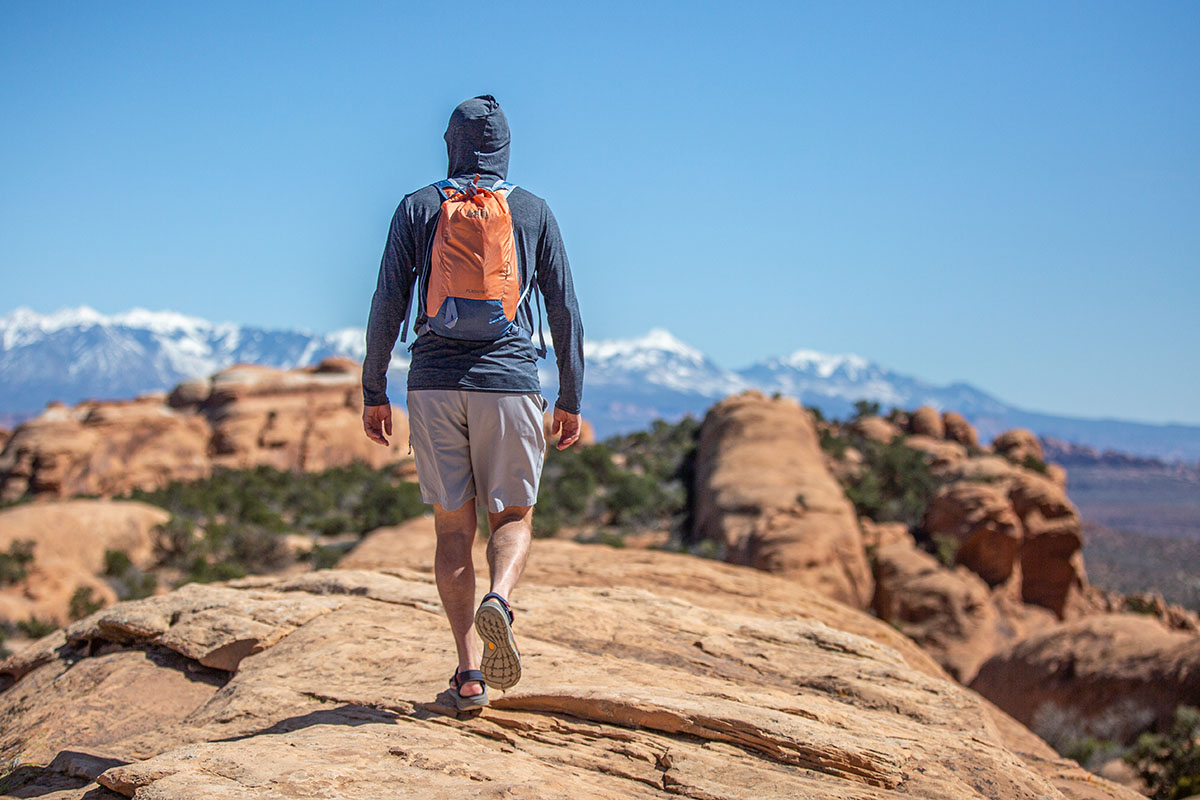
Finding a pair of hiking shorts that fits well can be a daunting task, but the good news is that there are a wide variety of waistband designs on the market for fine-tuning fit. Starting at the basic end of the spectrum are standard button-and-fly closures with belt loops (like the Kühl Renegade and Fjallraven Abisko), while others come with elastic waistbands, integrated belts, and/or drawstrings. There are inherent pros and cons to each style, and a final decision will come down to personal preference and your intended uses.
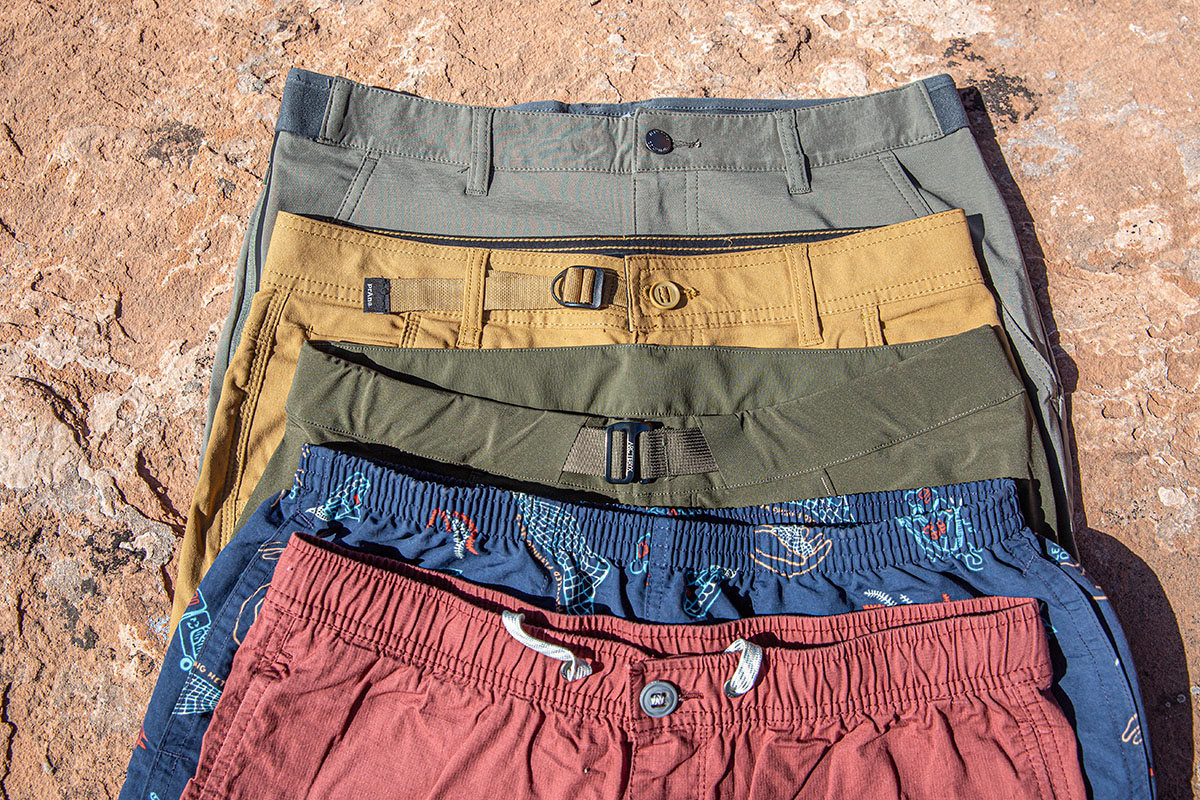
As we mentioned, designs with standard button-and-fly closures frequently come with belt loops. You’ll have to provide the belt separately, but it should be pretty easy to get a customized fit all around. On the flip side, some shorts already come with integrated belts or drawstrings for dialing in fit right out of the box. That said, you'll want to make sure they're fairly low-profile if you're wearing a backpacking pack or harness, as any excess material or bulk can get in the way and cause discomfort. Shorts like the Patagonia Multi Trails and Baggies and Vuori Ripstop Short also build a strip of elastic into their waistbands, which adds a nice dose of comfort and stretch around the waist. In the end, there’s no all-encompassing solution, and you’ll want to go with what works and feels best for you: Some prefer the sleekness of belt-free waistbands, while others care more about fit customization than additional bulk under a hipbelt.
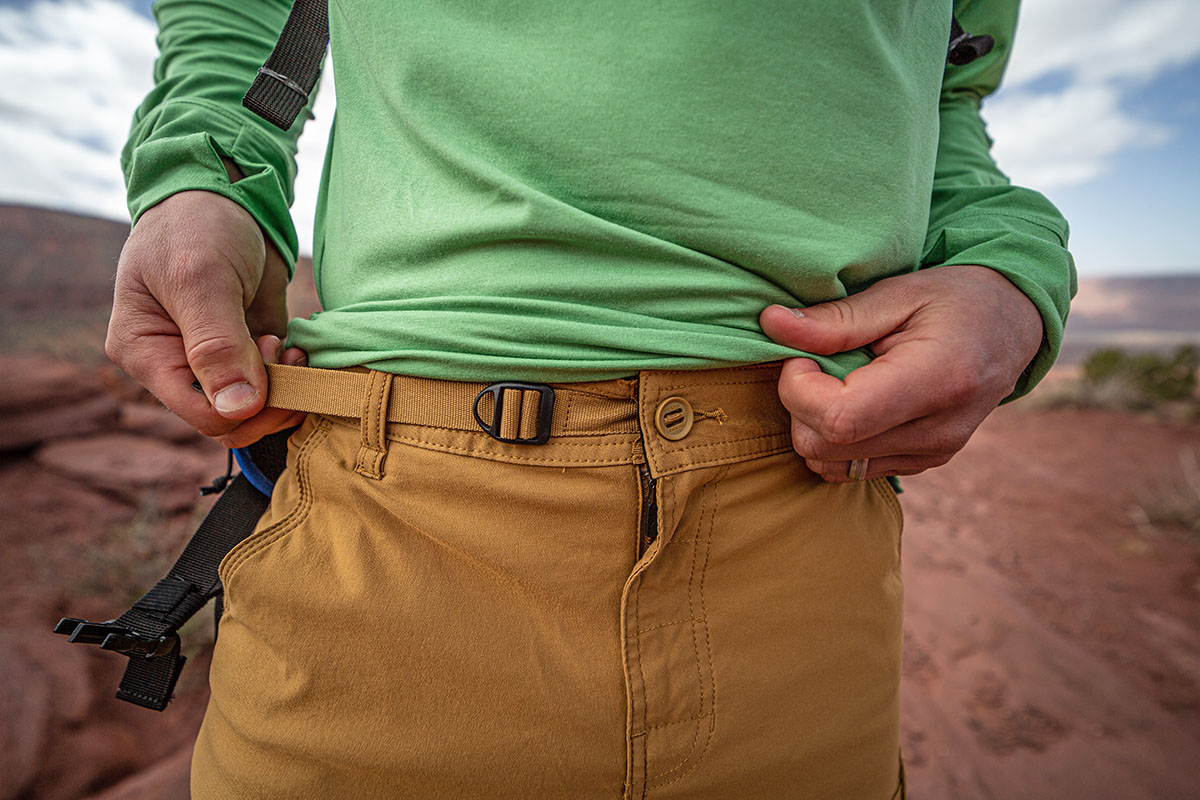
Functional storage is a key consideration for many hikers (ourselves included). Ideally, we want a pair of shorts to be able to fit a smartphone in at least one of its pockets and secure items like a key or lip balm in another zippered pocket. Unfortunately, these features aren’t always present, and if storage is important to you, you’ll have to shop discriminately. That said, all of the shorts listed above include at least one pocket, and many sport upwards of four or five: two on the front, two at the back, and perhaps one on the side (keep in mind though, these aren’t always super functional).
Given that the topic of pockets and storage is so important to us, we make sure to call it out in the write-ups above. We appreciate when shorts include one or two zippered pockets, but not all shorts do this well. Zippers introduce weight and bulk, and can sometimes rub uncomfortably on your leg as you hike. We recommend trying on hiking apparel in a store whenever possible before making a purchase, as the fit and feature set may not work for certain body types. Outdoor Research's Ferrosi features a good blend of zippered and non-zippered pockets, with zippered pockets at the right hip and rear—just enough to safely stash essentials without adding too much weight.
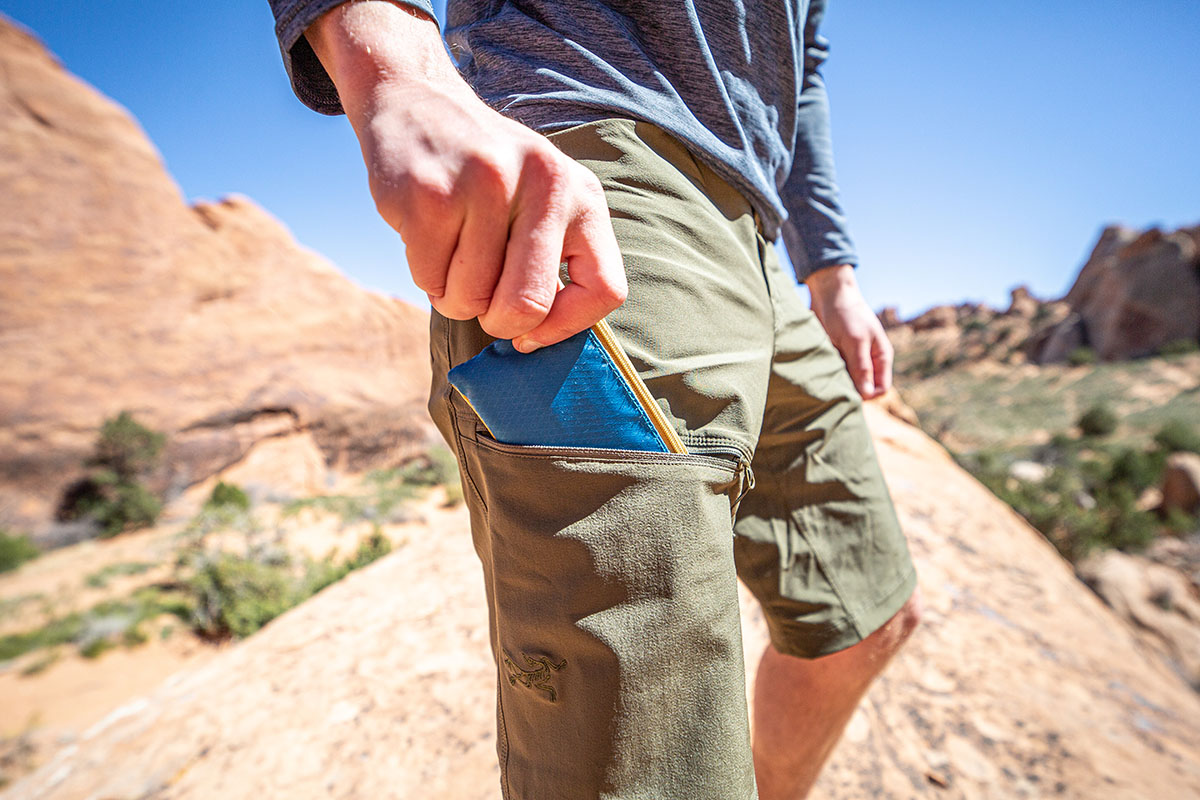
The hiking shorts on our list come in a range of lengths, which are most commonly measured in terms of the inseam (the length from the crotch seam to the hem). These span from the Patagonia Baggies (5 in.) to the Fjallraven Abisko Shorts (11 in.). We also often see shorts offered in multiple inseam options, such as the OR Ferrosi Shorts (7 or 10 in.), Columbia Silver Ridge Cargo Shorts (10 or 12 in.), and many other picks above. Exceptions include the Patagonia Multi Trails, Vuori Ripstop Short, Fjallraven Abisko, and REI Sahara Cargo.
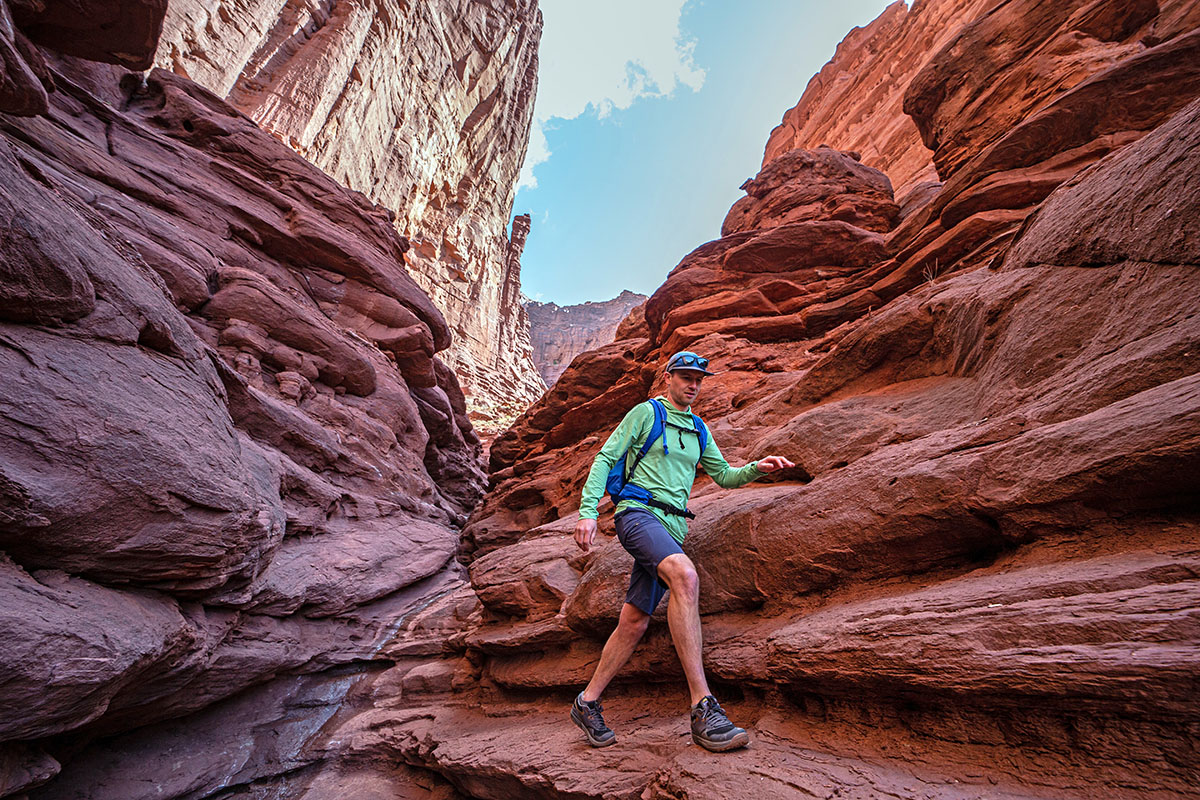
The length of shorts you choose will predominantly come down to a matter of personal preference, although it’s important to acknowledge that longer shorts do offer more protection from both the sun and sharp objects like branches and boulders (on the other hand, shorter designs generally provide more freedom of movement and ventilation). Finally, keep in mind that some manufacturers also list an outseam measurement, which specifies the length from the waist to the hem. This is far more common for women’s-specific designs and boardshorts but nevertheless can be helpful for giving you an idea of how high-waisted the short might be, which many hikers will appreciate for added coverage when bending over and high-stepping over trail obstacles.

We’ve put up with our fair share of baggy, ill-fitting hiking shorts over the years, but the good news is that the market has improved significantly of late, incorporating stretchy fabrics and features like sleek elastic waistbands and gussets for better range of motion. Many brands have also expanded their lineups to include a range of plus-sized options, which we’re happy to see (REI Co-op and Kühl are leaders in this movement). And as we mentioned above, it’s fairly common for a short to come in multiple inseam lengths—the prAna Stretch Zion, for example, is offered in 8 and 10-inch lengths, while the women’s Halle comes in 3- and 5-inch options. As with hiking pants, it’s best to try on several shorts before you buy, but we do our best to call out fit and sizing discrepancies in the write-ups above to help online shoppers.
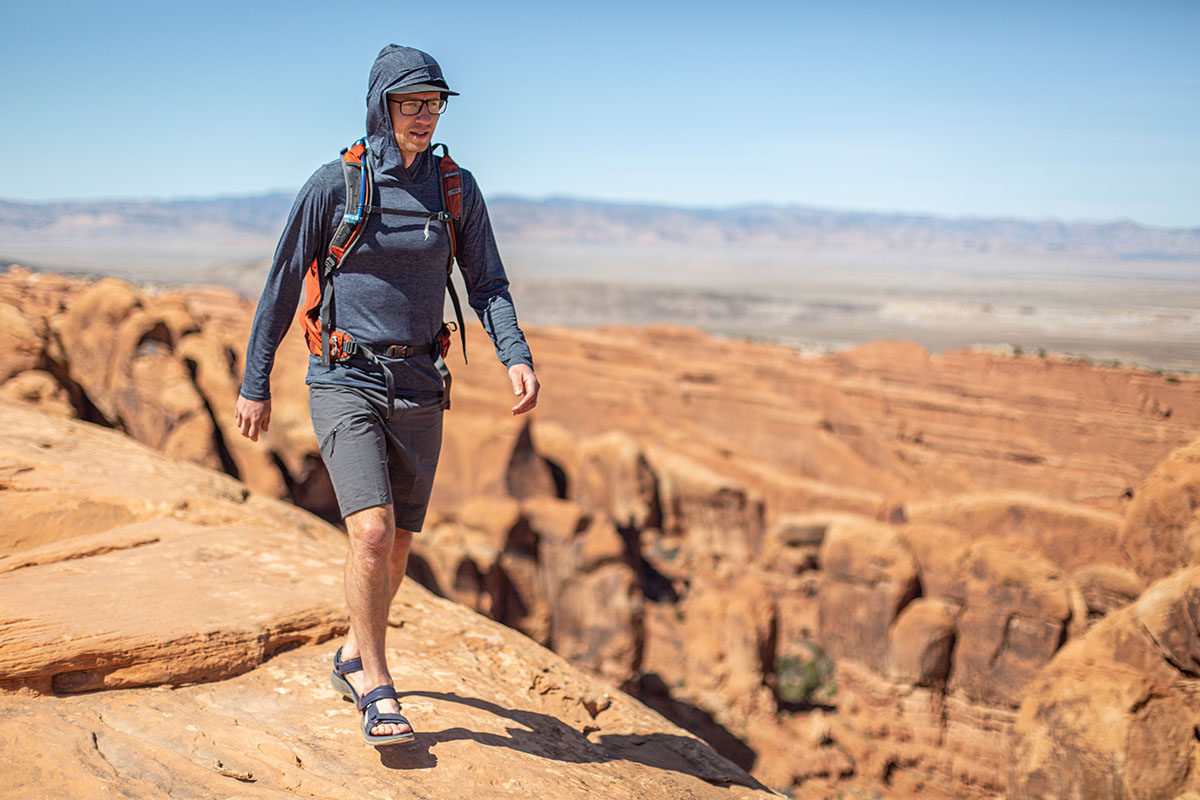
Some hiking shorts boast a UPF rating, which is a measurement of their ability to block harmful UV sun rays. A couple examples include the Outdoor Research Ferrosi Shorts and REI Sahara Cargo Shorts (both UPF 50+). Keep in mind, however, that the lack of leg coverage does detract from shorts’ sun-blocking ability. In other words, unlike with full-coverage hiking pants, you’ll likely still need to apply sunscreen to your lower legs. As usual, it will help to identify what you’ll be using your shorts for before determining if you want or need UPF protection.
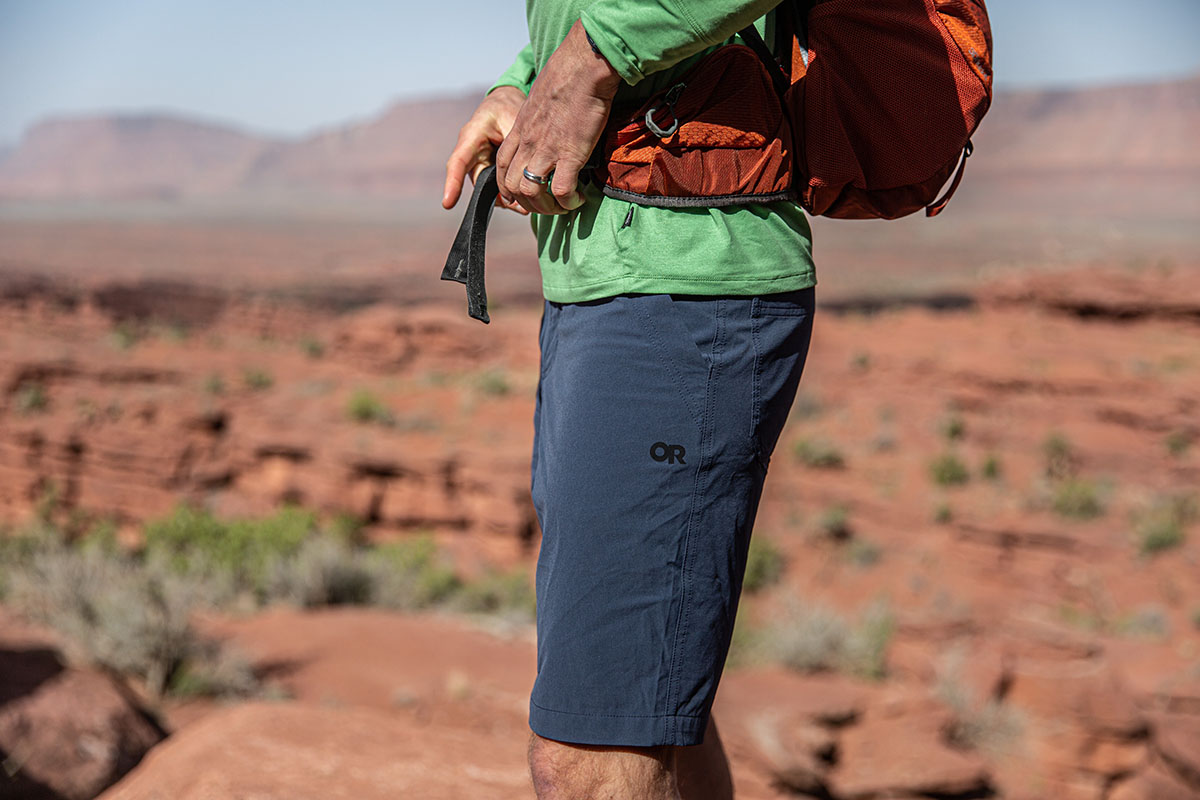
The outdoor industry has seen a big jump in sustainable practices and eco-friendly materials of late, and hiking shorts are no exception. In this case, common measures include the use of recycled fabrics and Bluesign-approved materials, the latter of which indicates they’re safe for the environment, workers, and consumers. Finally, some shorts—including Patagonia’s Baggies collection—also use PFC-free DWR coatings that forgo the use of harmful perfluorocarbons.
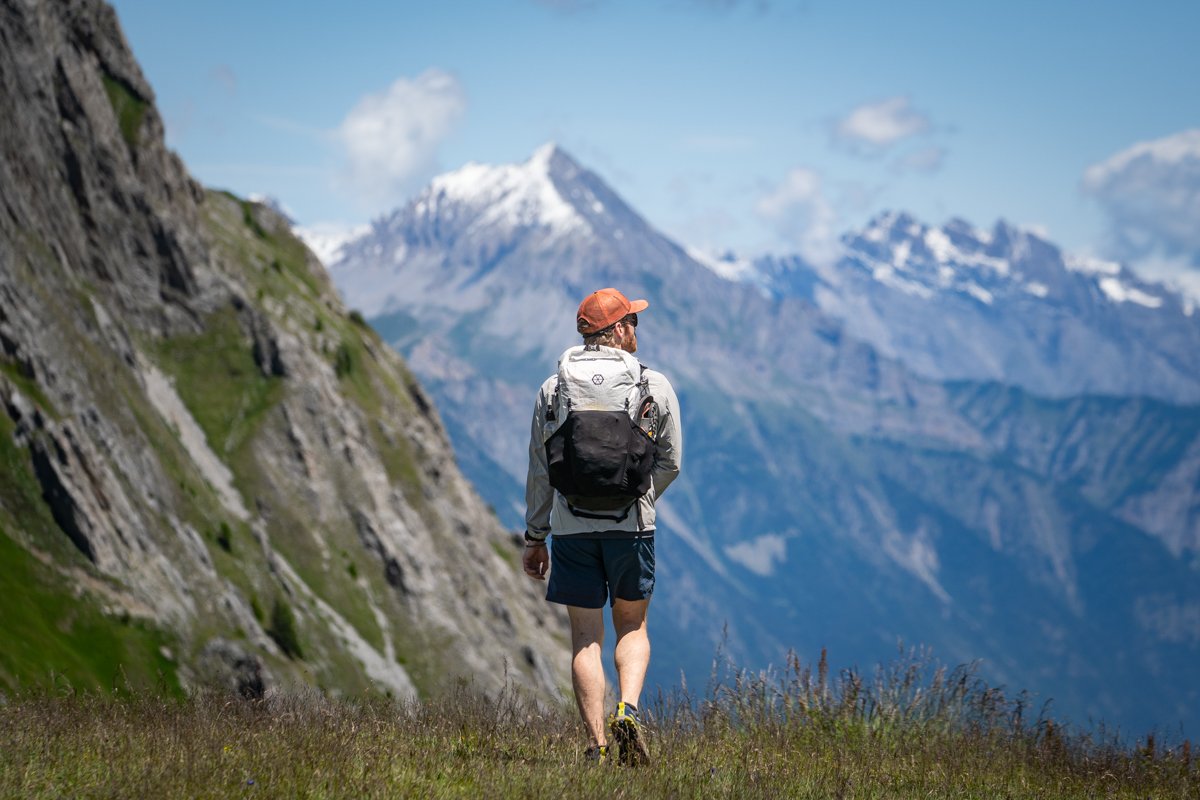
REI Co-op and Patagonia are leaders in the sustainability realm, as evidenced by the Sahara Cargo Shorts (96% recycled nylon and bluesign-approved fabrics) and Multi Trails Shorts (90% recycled polyester and also bluesign-approved). The Multi Trails also tack on a Fair Trade Certification, indicating that Patagonia put extra money into production to ensure that workers have access to fair compensation, healthcare and childcare programs, and more. And their Quandary and Baggies are made with nylon from recycled fishing nets, which is an innovative step toward reducing ocean plastic pollution. In the end, we appreciate when brands go the extra mile in being eco-conscious and transparent about their practices (and particularly when it doesn't compromise quality and performance).
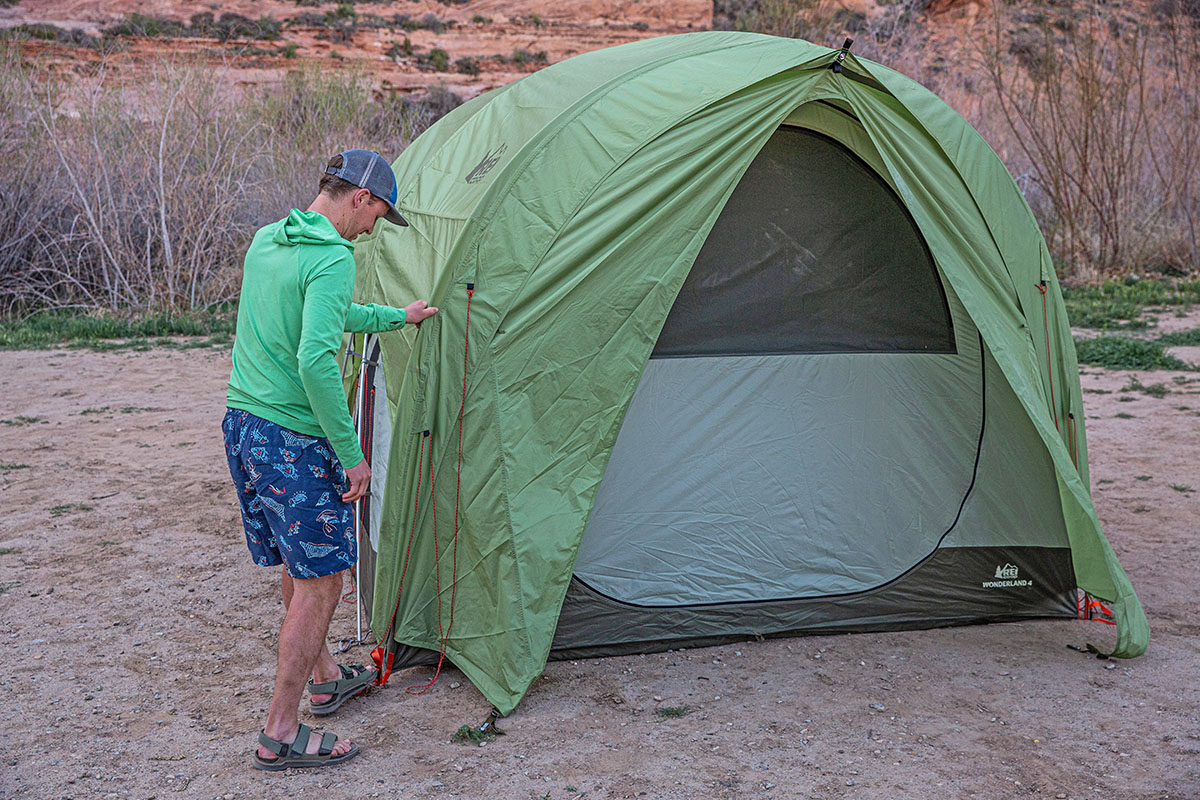
Our picks above were selected primarily based on the experiences of male-identifying testers, although you’ll notice we link to both the men’s and women’s versions whenever available. Additionally, due to this category’s noteworthy variation in styles, we’ve also tested and compiled a unique round-up of the best women’s hiking shorts where you’ll find many of the same models here (names and colorways sometimes differ) as well as a variety of women’s-specific hiking shorts.
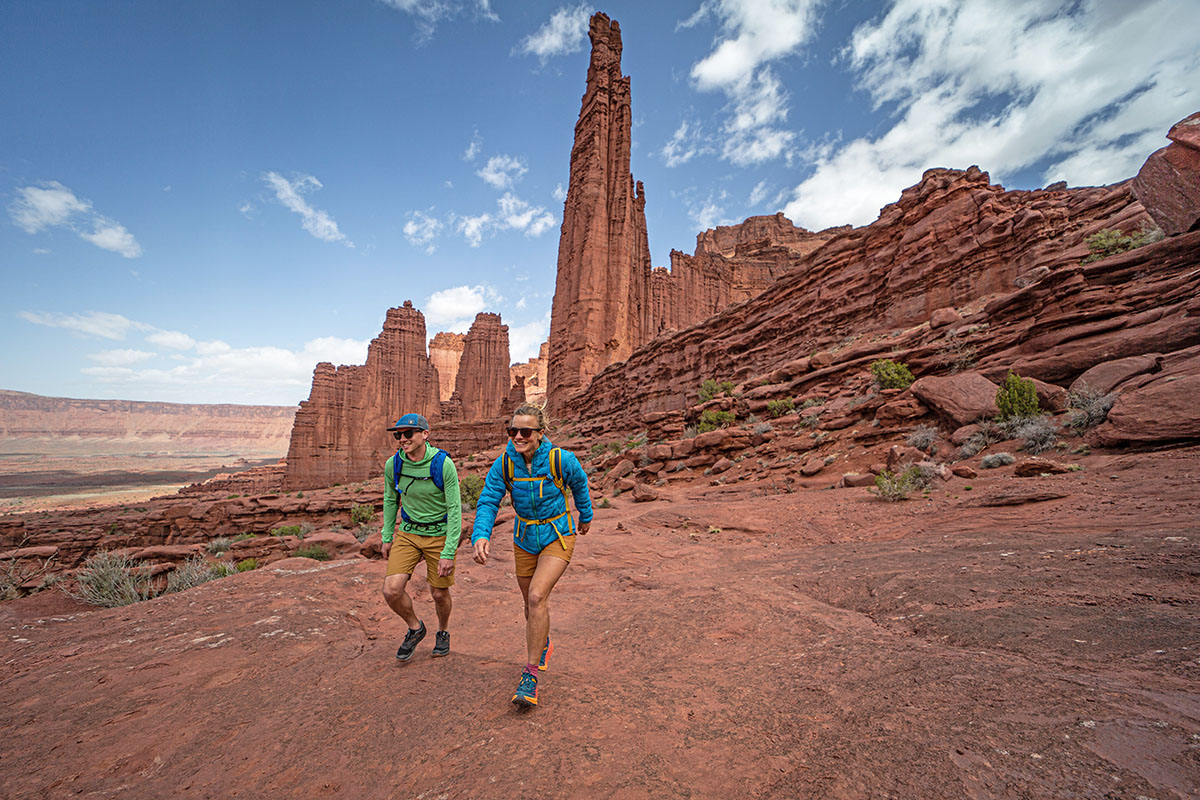
If you're hitting the trail in mild to hot conditions, you'll be faced with the decision of whether to wear a pair of hiking pants or shorts. With pants, you get significantly more protection (from sun, sharp objects, and bugs), and if temperatures drop or the wind picks up, your legs will be better insulated against the elements. Pants generally offer more storage as well, don't bunch up when worn underneath a harness, and can guard against debris getting into your hiking shoes or boots. In short, they're the more high-performance design and generally our choice for variable days, mountain environments, or when we want maximum protection.
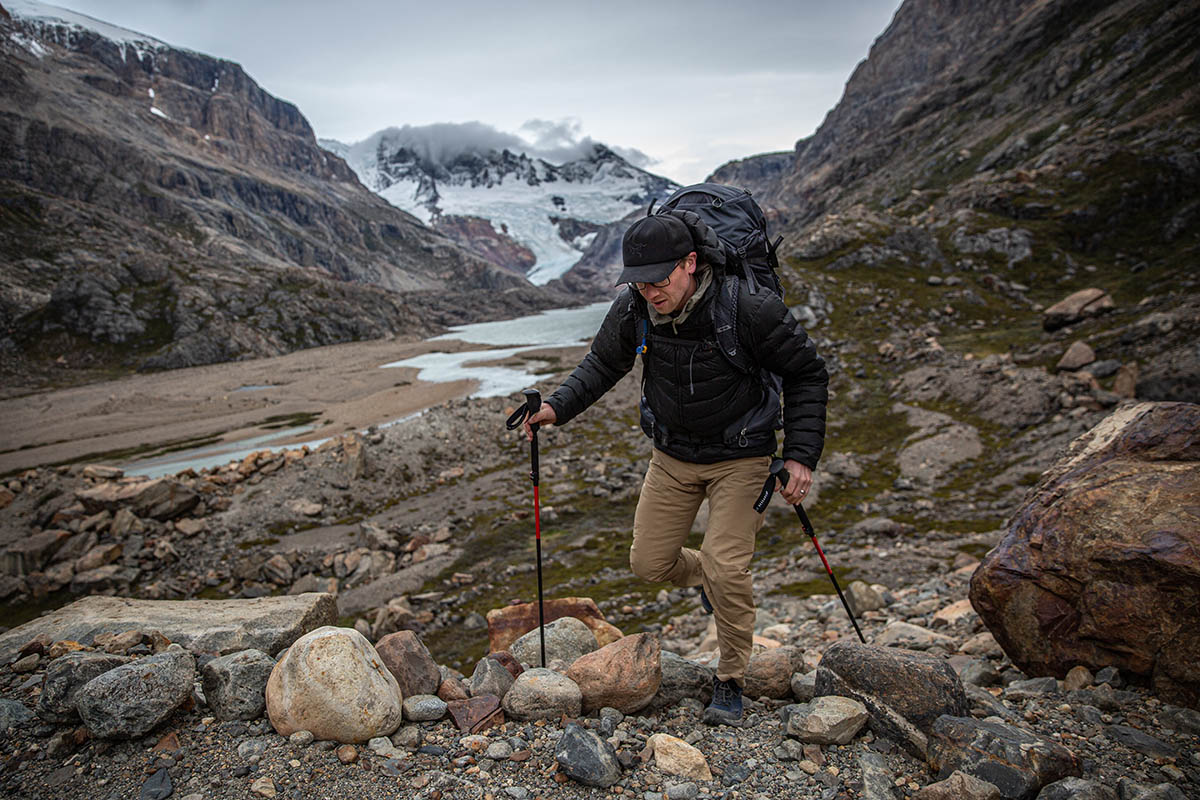
On the flip side, shorts are by far the more breathable choice, and they also tend to dry out more quickly after getting wet thanks to their more minimalist builds. We generally prefer them on hot days or when we know we'll be playing in or around water (or needing to ford rivers). They're also the better choice if you're mixing in a little running with your hiking: With less fabric, shorts won't weigh you down as much as pants, and you won't have to deal with the legs brushing up against each other with each stride. Oftentimes, we'll bring shorts for the hiking portion of our day and pack a pair of pants for our destination, whether it's a climbing route, a campsite, or an exposed mountaintop. For the most versatile option, convertible pants (like the Patagonia Quandary Convertible Pants) zip off at the knee and convert to shorts, but the design is polarizing and certainly not for everyone.
Back to Our Hiking Shorts Picks Back to Our Hiking Shorts Comparison Table